Intel's Arc B570 is a scaled-down version of the B580 GPU we reviewed about a month ago. The B580 is a budget-minded GPU that really impressed us when we first tested it, but since then things have soured a bit.
First and foremost, the discovery of a major overhead issue that negatively impacts performance in CPU-demanding games, particularly when paired with older or slower CPUs. While the B580 is still very usable with a CPU like, say the Ryzen 5 5600, it does result in noticeably slower performance than we initially expected. This shortcoming obviously hurts the overall value of Intel's new GPUs. We have since re-tested the B580 and today's review will incorporate updated data to evaluate the B570.
The second issue has been availability. Even a few weeks after launch, the Arc B580 remains frustratingly difficult to find in stock. This is not a great start for Intel's latest GPU lineup, and we will discuss this issue further later in the review.
The new Arc B570 is priced at $220, which is only $30 less than the B580. It is based on the same 272mm2 die, but the Xe core count has been reduced by 10%, from 20 to 18. Additionally, the peak core clock has been reduced by 4%, from 2,850 MHz to 2,750 MHz.
The memory subsystem has also been downgraded to a 160-bit wide memory bus, which reduces the VRAM buffer to 10 GB. Despite using the same 19 Gbps memory, the memory bandwidth has been reduced by 17%, down to 380 GB/s.
In a nutshell, the Arc B570 features a 10% reduction in cores, a 4% decrease in frequency, 20% less VRAM, and 17% less memory bandwidth. All of this comes with a small 12% reduction in price, which could present challenges for the B570's competitiveness. However, we need to examine its performance before drawing any conclusions, so let's dive into that.
Gaming Benchmarks
Marvel Rivals
First, we have Marvel Rivals. Here, the B570 roughly matched the performance of the RTX 4060 at native 1440p, achieving 60 fps. This makes it 12% slower than the B580 and 25% faster than the RX 7600.
Switching to the Ryzen 5 5600, the B570 remained 11% slower than the B580. However, it also became 8% slower than the RTX 4060 and just 10% faster than the RX 7600.
When upscaling is enabled on the 5600, performance levels out across the board. However, the B570 emerges as the slowest GPU tested, rendering 82 fps, which is 7% slower than the RX 7600.
Star Wars Jedi: Survivor
Next, we have Star Wars Jedi: Survivor. At native 1440p, the B570 was 14% slower than the B580, regardless of whether it was paired with the 9800X3D or the 5600. This performance placed it on par with the RTX 4060 and RX 7600. However, enabling upscaling left it 9% slower than the B580 and 8% slower than the Radeon and GeForce GPUs.
Marvel's Spider-Man Remastered
Spider-Man Remastered continues to expose the Arc GPUs' overhead issues, especially when paired with lower-end CPUs. At native 1440p with the 9800X3D, the B570 was 12% slower than the B580 but managed to outperform both the RTX 4060 and RX 7600, boasting a 27% lead over the Radeon GPU.
However, when paired with the Ryzen 5 5600, the B570 became only 4% slower than the B580. This may seem acceptable, but performance of the Arc GPUs was capped at around 80 fps due to CPU overhead. This limitation negated the earlier advantage, as the B570 dropped from being 27% faster than the RX 7600 with the 9800X3D to being 5% slower with the 5600.
Additionally, enabling upscaling exacerbated the issue. The B570 ended up 23% slower than the RX 7600, as performance was again limited to approximately 80 fps with the Ryzen 5 processor.
Hogwarts Legacy
The Hogwarts Legacy results are noteworthy. At native 1440p using the 9800X3D, the B570 was 16% slower than the B580, making it the slowest GPU tested. Switching to the Ryzen 5 5600 narrowed this gap to 9%, allowing the B570 to match the RTX 4060.
When upscaling was enabled, however, the Arc GPUs fell behind, even when paired with a high-performance CPU like the 9800X3D. In this case, the B570 ended up nearly 30% slower than the RX 7600.
Warhammer 40,000: Space Marine 2
In Space Marine 2, the B570 trailed the B580 by 18% at 1440p with the 9800X3D. This margin decreased to 12% when using the Ryzen 5 5600.
The bigger issue arose when upscaling was enabled. The Arc GPUs were limited to less than 60 fps with a mid-range CPU, and the problem persisted even with the 9800X3D. At native 1440p with the 5600, the B570 was 20% slower than the RX 7600. Enabling upscaling slightly increased this margin to 22%.
Although Radeon GPUs faced their own overhead issues in this scenario, the comparison with the RTX 4060 was less favorable, as the Nvidia GPU was nearly 50% faster than the B570.
A Plague Tale: Requiem
In A Plague Tale: Requiem, the Arc CPU overhead issue was not a factor. At native 1440p with either CPU, the B570 was 11% slower than the B580. With upscaling enabled, the B570 matched the RX 7600, offering decent performance overall.
Cyberpunk 2077: Phantom Liberty
In Cyberpunk 2077, the B570 performs roughly on par with the RTX 4060, making it slightly faster than the RX 7600, at least when using the 9800X3D. Installing the Ryzen 5 5600 results in performance becoming more CPU-limited, with all four GPUs delivering similar performance at approximately 60 fps.
Enabling upscaling pushes all four GPUs to around 80 – 84 fps. However, the 1% lows are noticeably lower when using the Arc GPUs, which may impact gameplay smoothness.
Dying Light 2 Stay Human
Dying Light 2 is similar to A Plague Tale: Requiem in that the Arc overhead issue is not a significant factor. Consequently, the B570 performs well in this title, even with the 5600 and when upscaling is enabled. For example, with the 5600 and upscaling, the B570 nearly matches the RTX 4060, trailing by just 4%.
Starfield
In Starfield, the B570 performs poorly, much like the B580. It renders just 37 fps at native 1440p on the medium quality preset. This level of performance is consistent across both the 9800X3D and 5600. With upscaling enabled, the Arc GPUs cap out at around 50 fps on the Ryzen 5 processor, whereas the RTX 4060 achieves 63 fps, making the GeForce GPU 31% faster than the B570.
Dragon Age: The Veilguard
In Dragon Age: The Veilguard, both the B570 and B580 are capped at 67 fps when using either the 9800X3D or 5600, matching the performance of the RTX 4060. With upscaling enabled, the Arc GPUs reach just over 80 fps, but the RTX 4060 maintains a slight 6% performance advantage.
Star Wars Outlaws
Star Wars Outlaws remains an extremely demanding title, even with the medium preset. The B570 achieves only 37 fps at 1440p or 53 fps with upscaling enabled. Interestingly, slightly better performance was observed with the 5600, though this improvement was just a few extra frames.
The challenge for the B570 is that while it matches the RTX 4060 at native 1440p with the 5600, enabling upscaling causes the B570 to fall 13% behind as the Arc GPUs struggle to reach 60 fps.
War Thunder (DX11)
Testing War Thunder in DirectX 11 mode reveals some interesting results. At native 1440p with the 9800X3D, the B570 is actually 10% faster than the RTX 4060. However, switching to the 5600 causes the B570 to become 20% slower, as both Arc GPUs are capped at around 180 fps. This gap widens further with upscaling enabled.
War Thunder (DX12 Beta)
Switching to DirectX 12 in War Thunder significantly changes the performance landscape. With the 9800X3D, the B570 is only 6% slower than the B580 but remains 8% slower than the RTX 4060. With the Ryzen 5 processor, results are similar, though enabling upscaling gives the RTX 4060 a slight performance edge. The DX12 API effectively addresses the Arc GPUs' overhead issue in this title.
The Last of Us Part I
In The Last of Us Part I, the B570 matches the RTX 4060 and RX 7600 at 1440p when paired with the 9800X3D. Similar performance is observed with the Ryzen 5 processor. Although the Arc GPUs fall slightly behind with upscaling enabled, the B570's performance remains respectable overall.
Power Consumption
In terms of power, the Arc B570 performs well, consuming 8 – 14% less power than the B580, which aligns with the hardware downgrades.
On average, power consumption is about 20 watts higher than the RTX 4060. However, this is unlikely to concern gamers, as the B570's power consumption is not excessive for its class.
Performance Summary
Using the Ryzen 9800X3D at 1440p, the Arc B570 is on average 13% slower than the B580. It roughly matches the RTX 4060 and Radeon 7600, delivering solid results for a $220 GPU. However, when upscaling was enabled for higher performance, the B570 slipped slightly behind the RX 7600. Even so, the overall performance remains reasonable.
Now, when testing with a slower CPU, such as the Ryzen 5 5600, the B570 still performed adequately at native 1440p, once again matching the RX 7600 while being 8% slower than the B580.
With upscaling enabled, it was 4% slower than the Radeon RX 7600 and 6% slower than the Arc B580. While this represents decent performance for a $220 GPU, we need to evaluate its cost per frame before making any value judgments.
Cost Per Frame
Before diving into the data, it's important to acknowledge that Intel B580's $250 MSRP is largely unattainable. Retailers like Newegg remain out of stock, making this pricing unrealistic. Similarly, listing scalper prices is unhelpful. Essentially, if the B580 isn't available at $250 or equivalent pricing in your region, it's not worth buying. The same applies to the B570 – if it isn't available at its $220 MSRP, it doesn't offer good value.
It's also really difficult to accurately assess the value of the new Arc GPUs as it depends on so many factors. Both the B580 and B570 offer more VRAM than competing AMD and Nvidia GPUs, but the Arc overhead issues often see the Arc GPUs underperform at 1080p or even 1440p with upscaling, and the CPU used plays a key role in all of this. That being the case, we have a few different data sets to make better sense of where these GPUs stand...
At native 1440p, the B570 offers excellent value, especially when paired with the 9800X3D. In this configuration, it matches the B580 in value, outperforming the RX 7600 by 15% and the RTX 4060 by 34%.
Using the Ryzen 5 5600, the B570 improves its value position relative to the B580, coming in 4% better. Against the RX 7600, it provides 12% better value, while it remains 22% better than the RTX 4060.
However, when using upscaling, Intel's value proposition becomes less favorable. With the 9800X3D, the B570 is only 10% better value than the RX 7600 and 18% better than the RTX 4060. With the Ryzen 5 5600, the B570 delivers just 8% better value per frame than the RX 7600, and when factoring in 1% low data, Intel's position becomes even less favorable.
Drawing the Line
Evaluating the true value of Intel's new Arc GPUs is not as straightforward as it should be. On one hand, if paired with a powerful CPU, the GPUs perform well. On the other hand, those shopping for a budget GPU are unlikely to have high-end CPUs like the Ryzen 5 7600 or better. So if you're running a Ryzen 5 5600 or slower CPU, opting for a competing GPU like the Radeon RX 7600 ensures better overall performance.
This is major problem problem for the B570. As an entry-level GPU designed for budget gaming, it needs to perform well with older and/or less capable CPUs – but realistically, most budget gamers do not use CPUs more powerful than the Ryzen 5 5600.
In our opinion, the Arc B580 can still be worth the gamble as the 12GB VRAM buffer makes it more attractive than the Radeon RX 7600 or RTX 4060. But the cut-down B570 isn't cheap enough to consider. While the 10GB VRAM buffer is an improvement over 8GB, the difference is marginal. Moving forward, 12GB should be the minimum VRAM for GPUs priced at $200 or more.
If the Arc B570 were available for $220, should you buy it? Probably not. At that price, it's better to spend $250 for either the B580 or the RX 7600. Since the B580 is largely unavailable, the Radeon GPU becomes the better choice.
So far, availability has been the biggest issue for Intel's Arc GPUs – not the drivers or the CPU overhead, but simply finding them in stock. A month after the B580's release, availability remains extremely limited. Pricing in other regions is also less favorable than in the U.S., which exacerbates the problem.
For example, in Australia, the B580 is available for $470 AUD, which matches the price of the RTX 4060 and is about $40 more than the RX 7600. Using more favorable 1440p native data but factoring in Australian pricing, the B570 offers just 6% better value than the Radeon 7600 when paired with the 9800X3D, and only 5% better value when using the Ryzen 5 5600. And this is assuming Intel's B570 ends up costing $410 AUD, which we've been told might not be the case, and it might cost nearly as much as the B580, which would be disastrous for its value proposition.
What began with optimism and excitement for Intel's second wave of Arc GPUs has been marred by critical setbacks. While Intel still has an opportunity to salvage the lineup, it remains to be seen if they can turn things around.
As of writing, the Arc B580 is the only model worth buying as long as it can be found at the $250 MSRP. Prices will vary depending on your region, but our rule of thumb is that the B580 needs to be at least 20% cheaper than the Radeon 7600 or RTX 4060 to be a viable option. Otherwise, the competing GPUs are simply better choices.
The B570, on the other hand, needs to be priced even lower – $200 is the maximum it should cost. If it's not, it's simply dead on arrival.


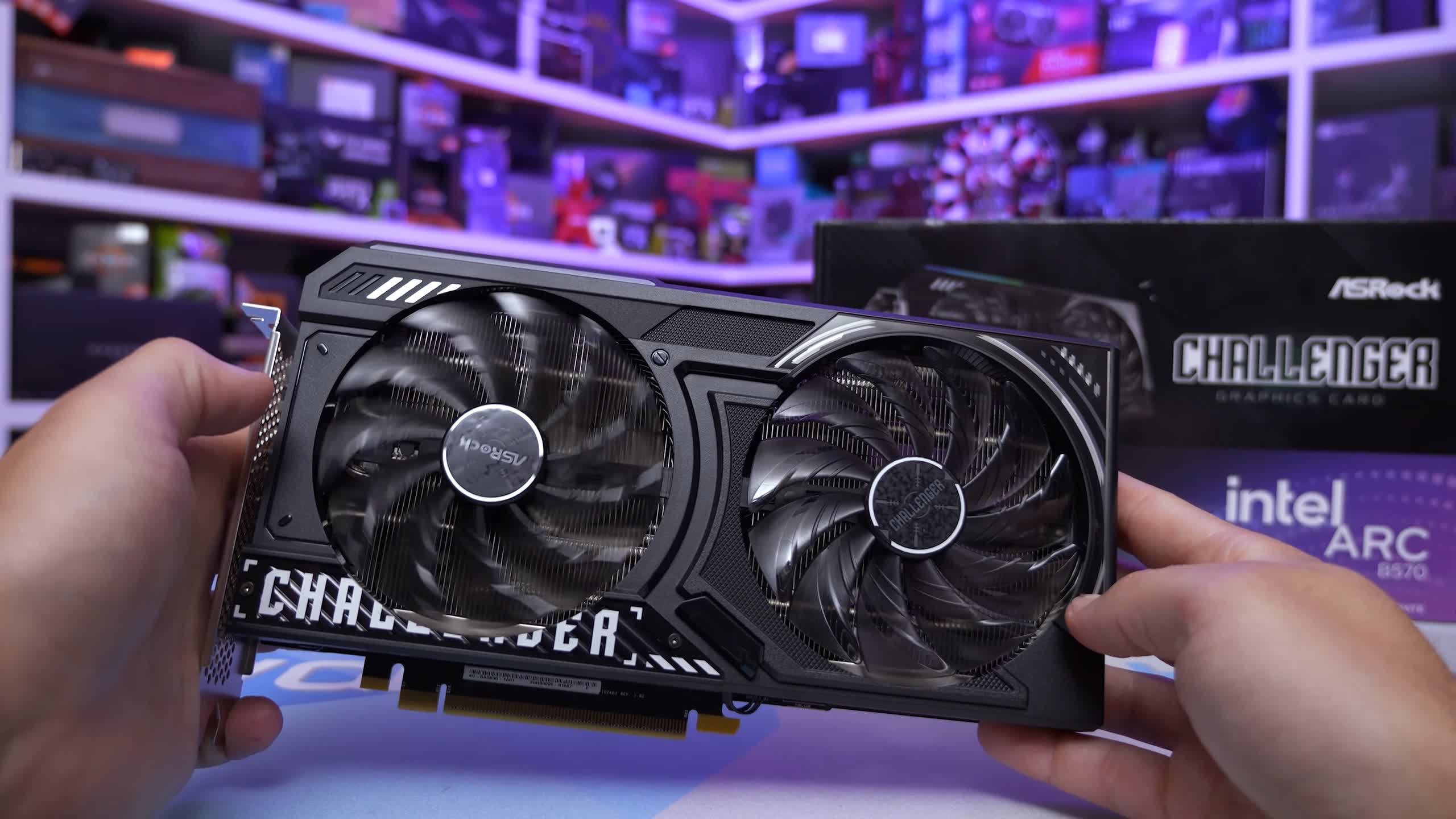
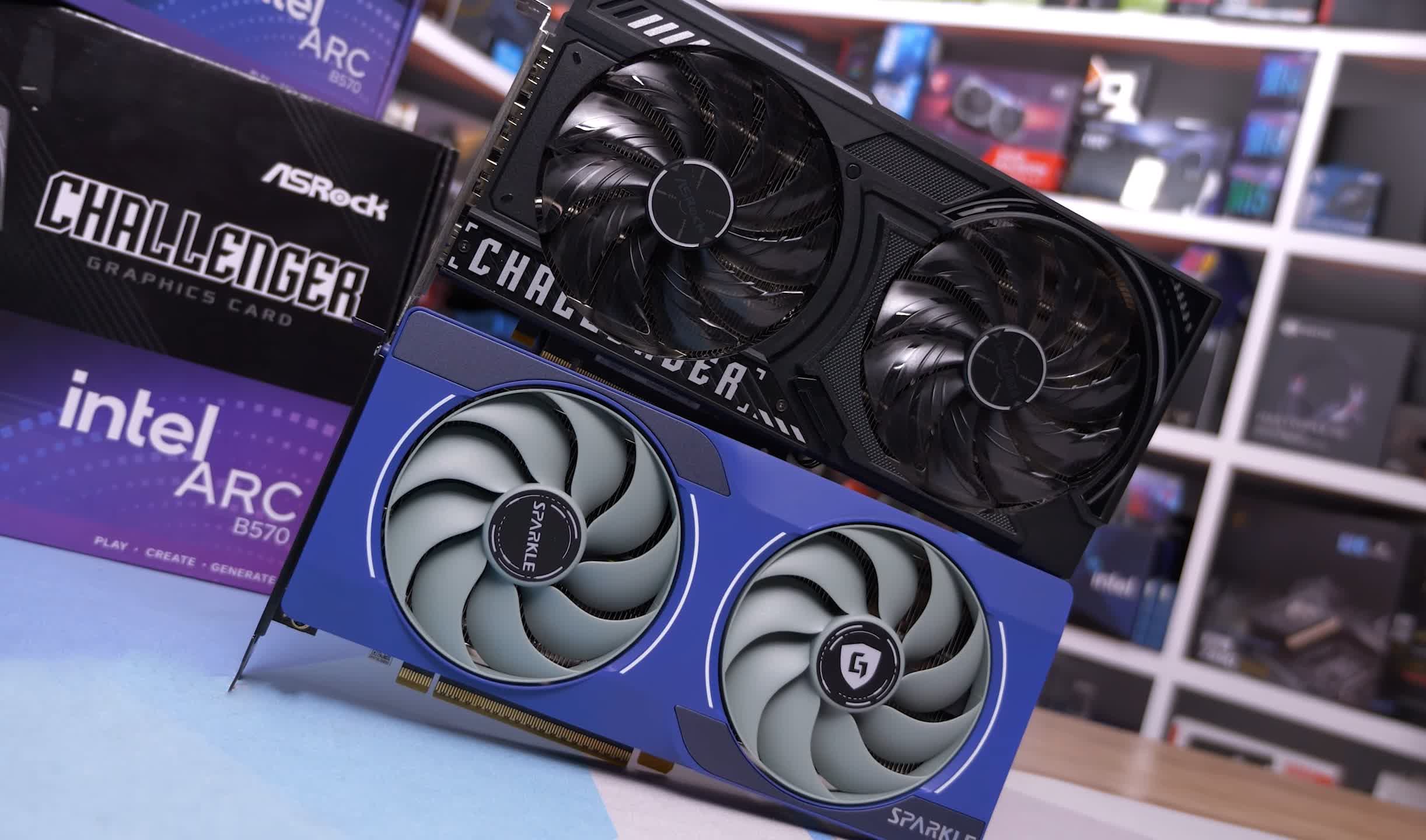
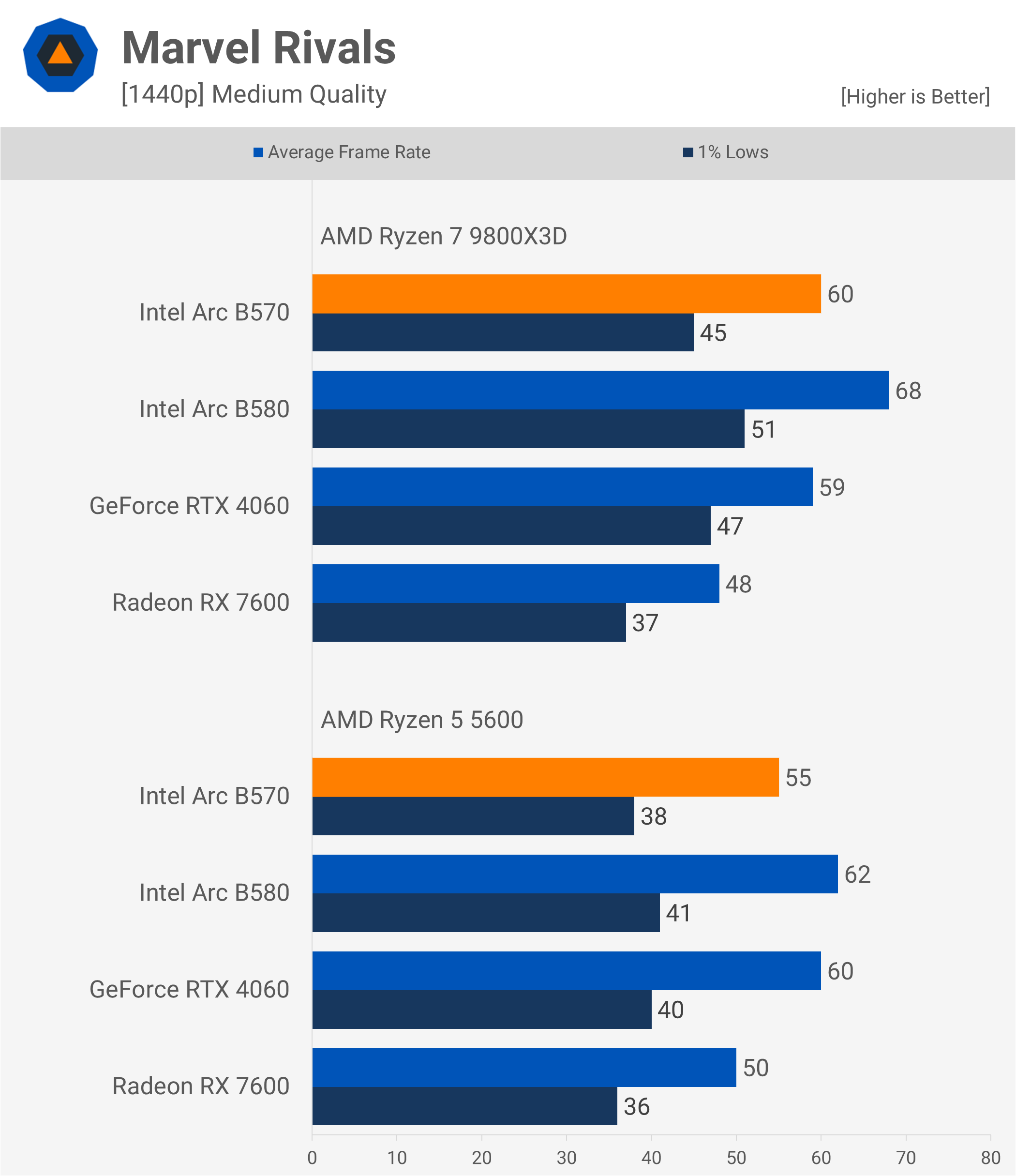
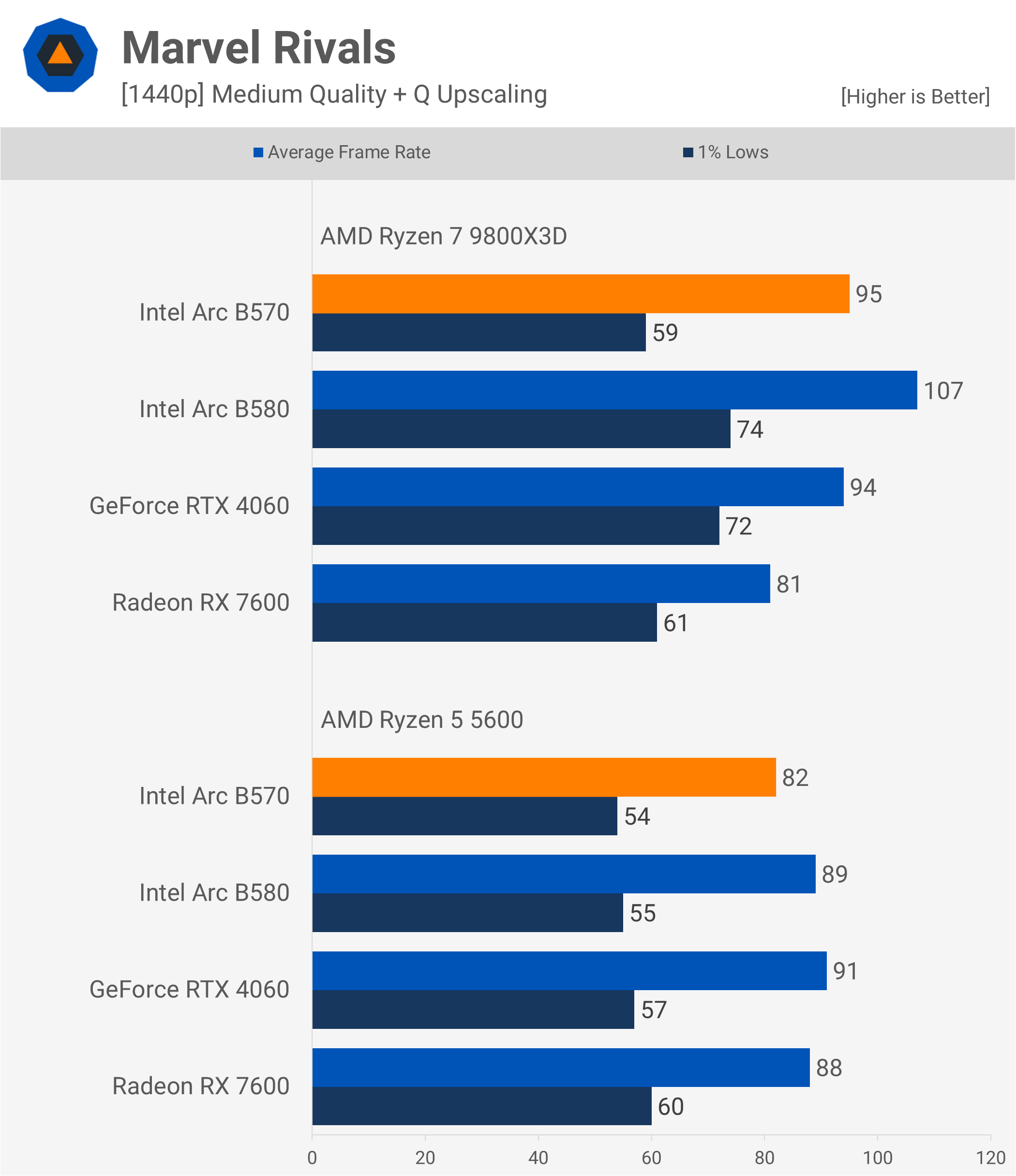
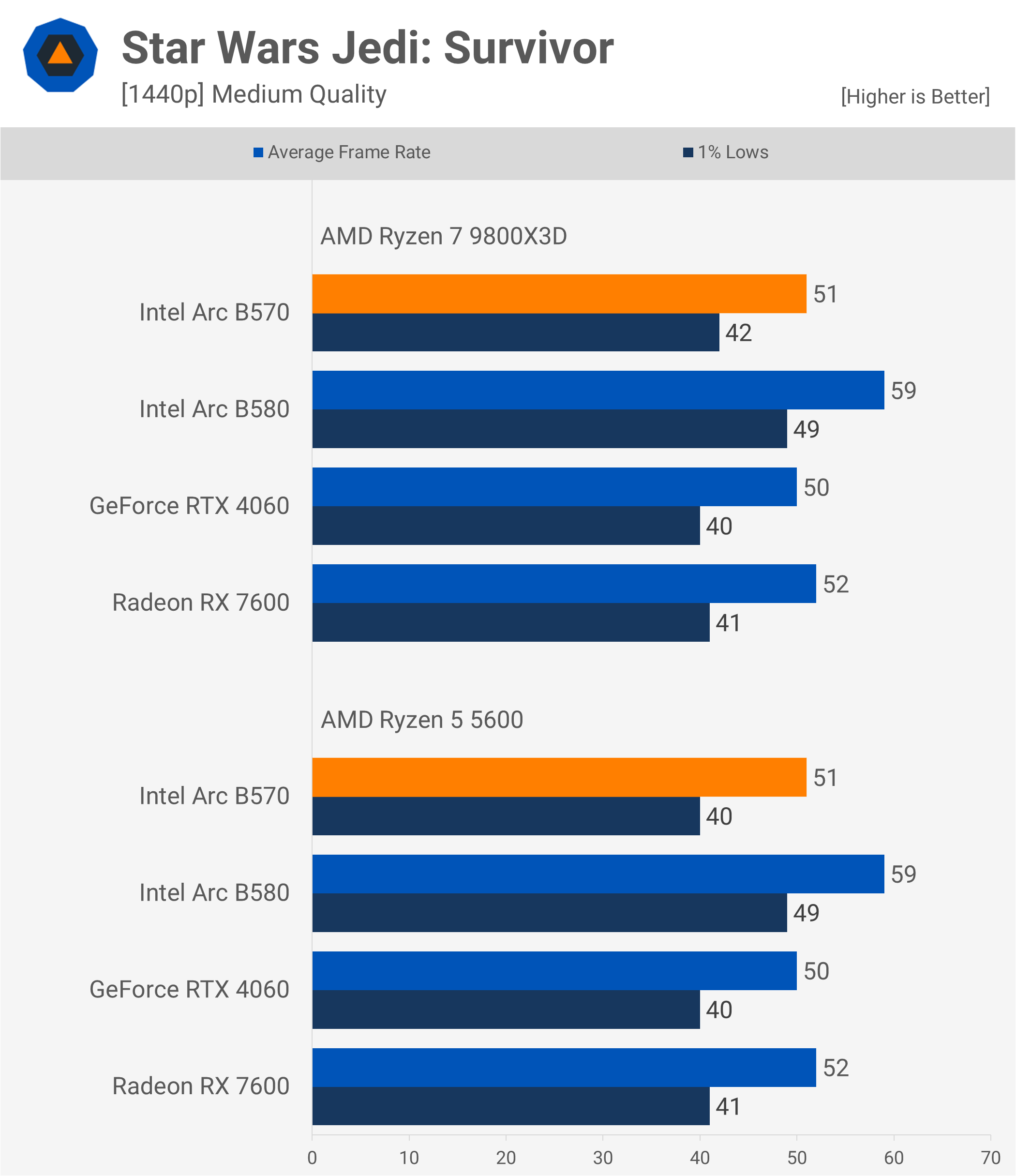
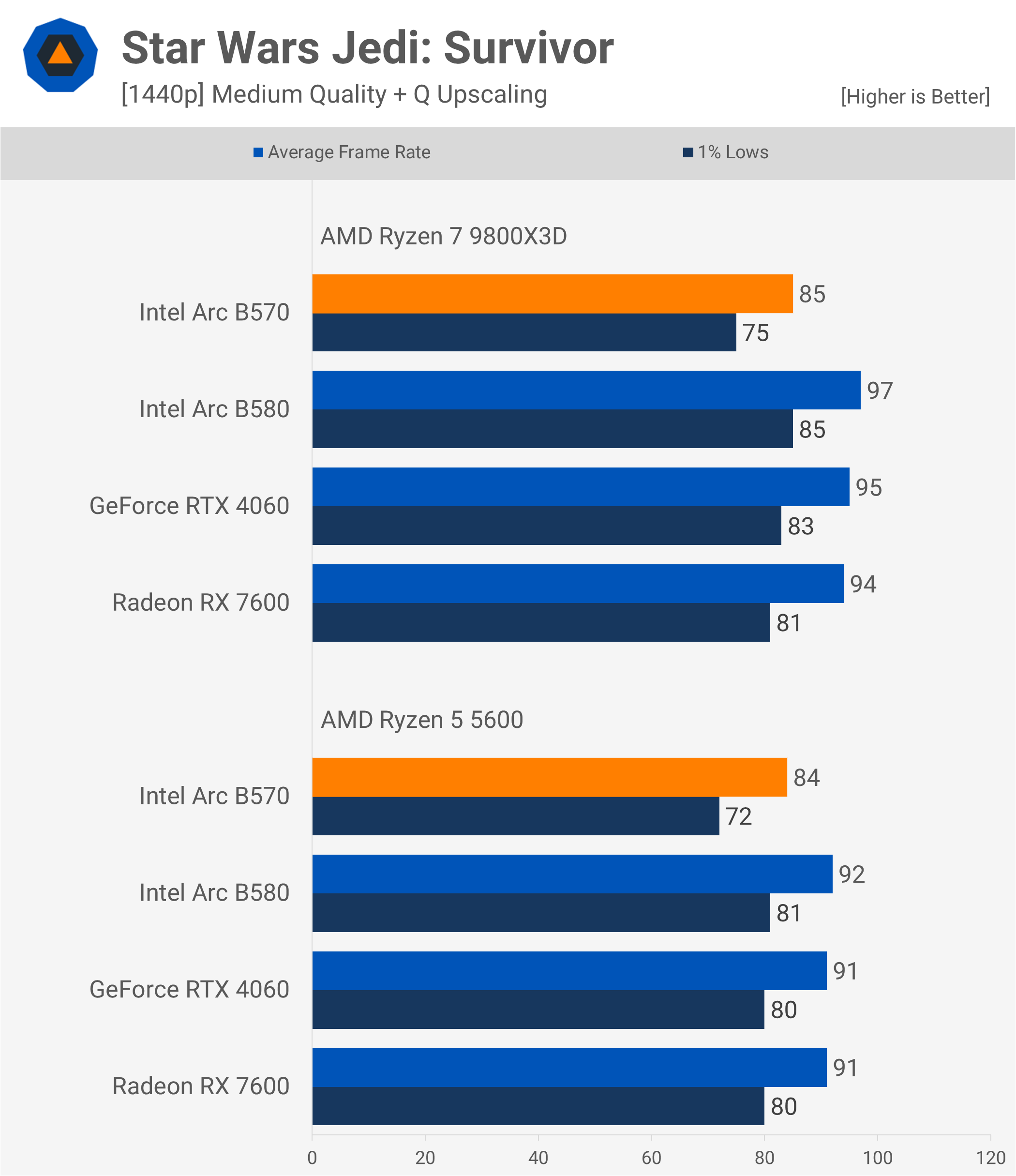
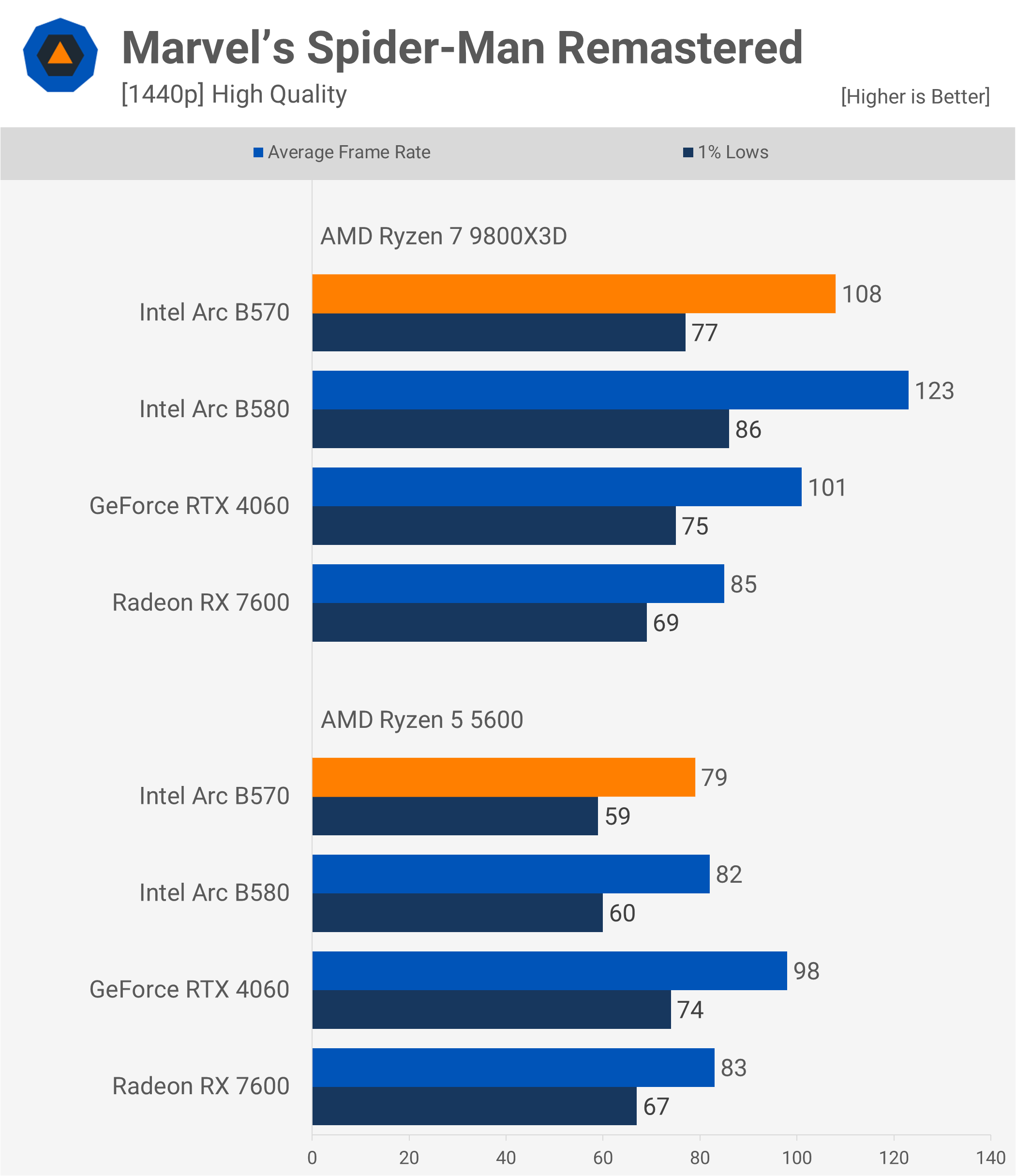
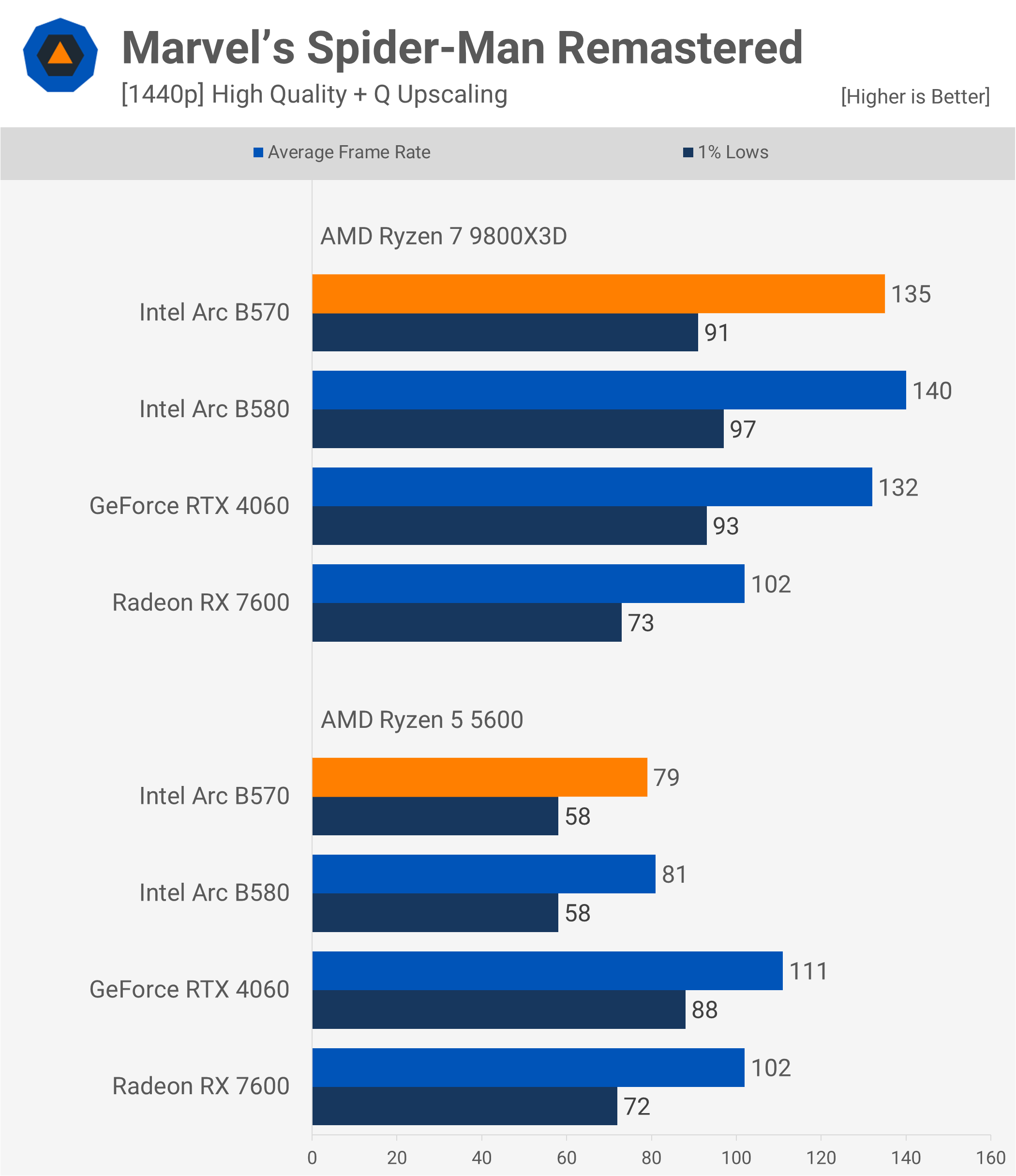
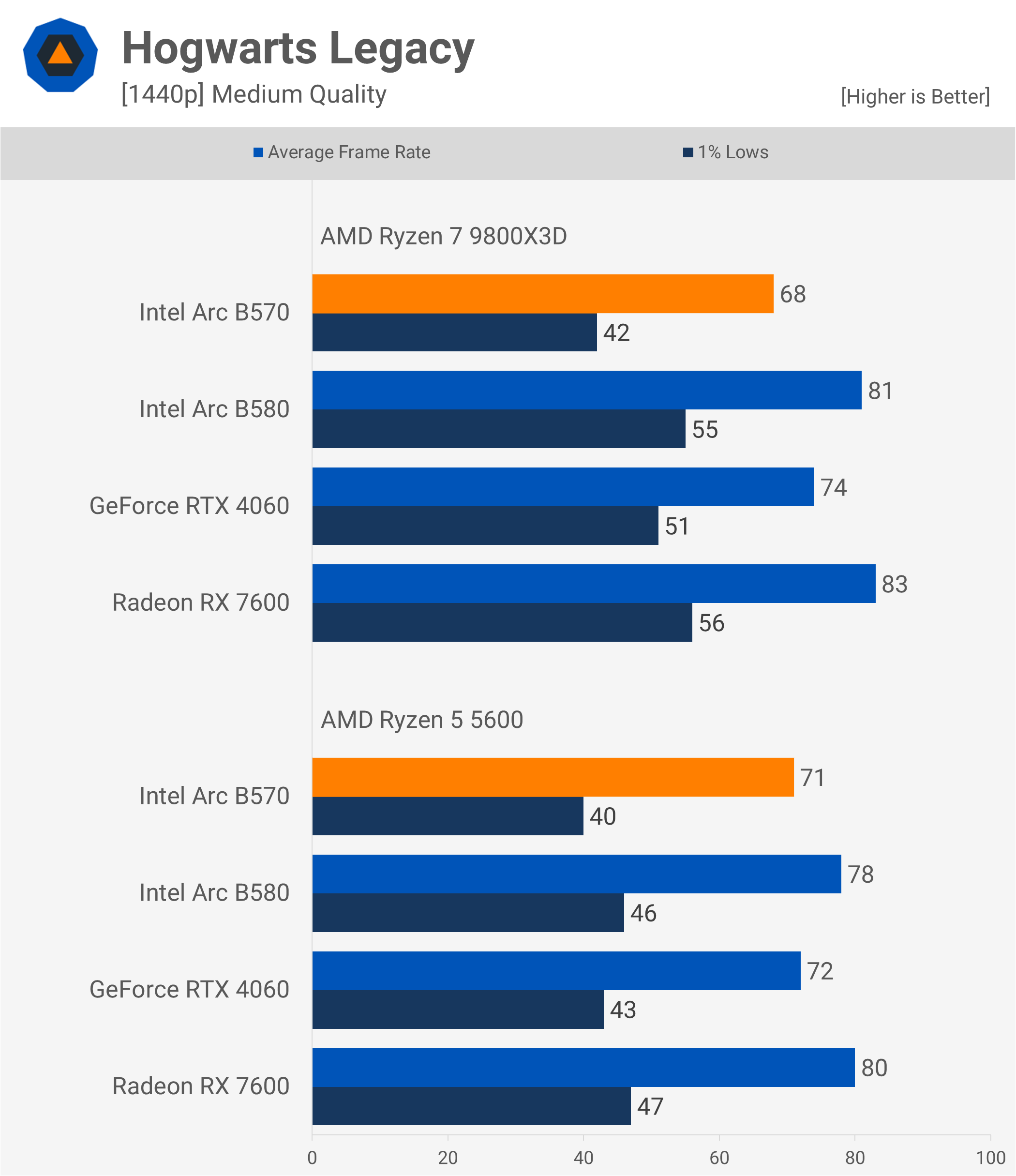
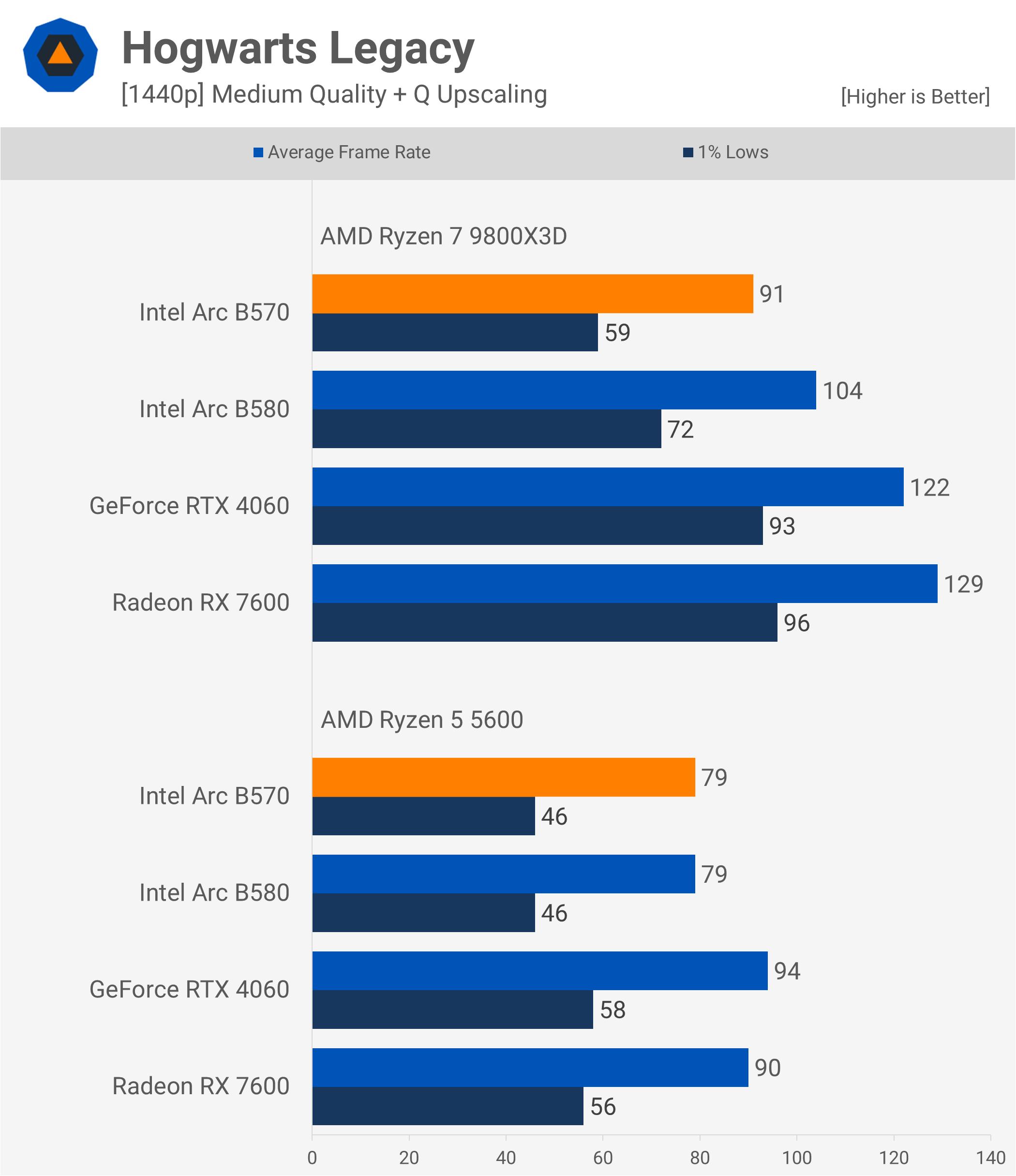
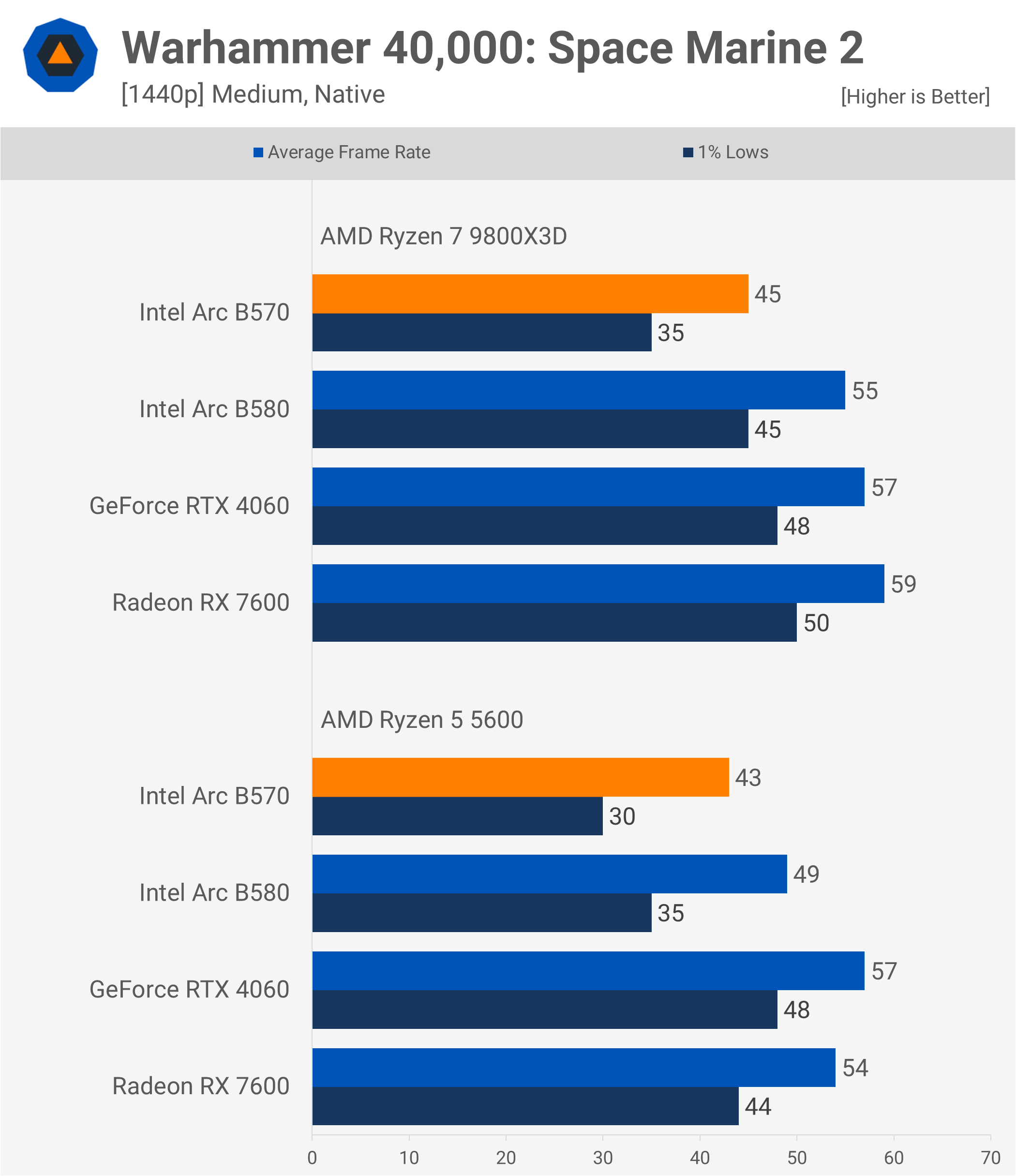
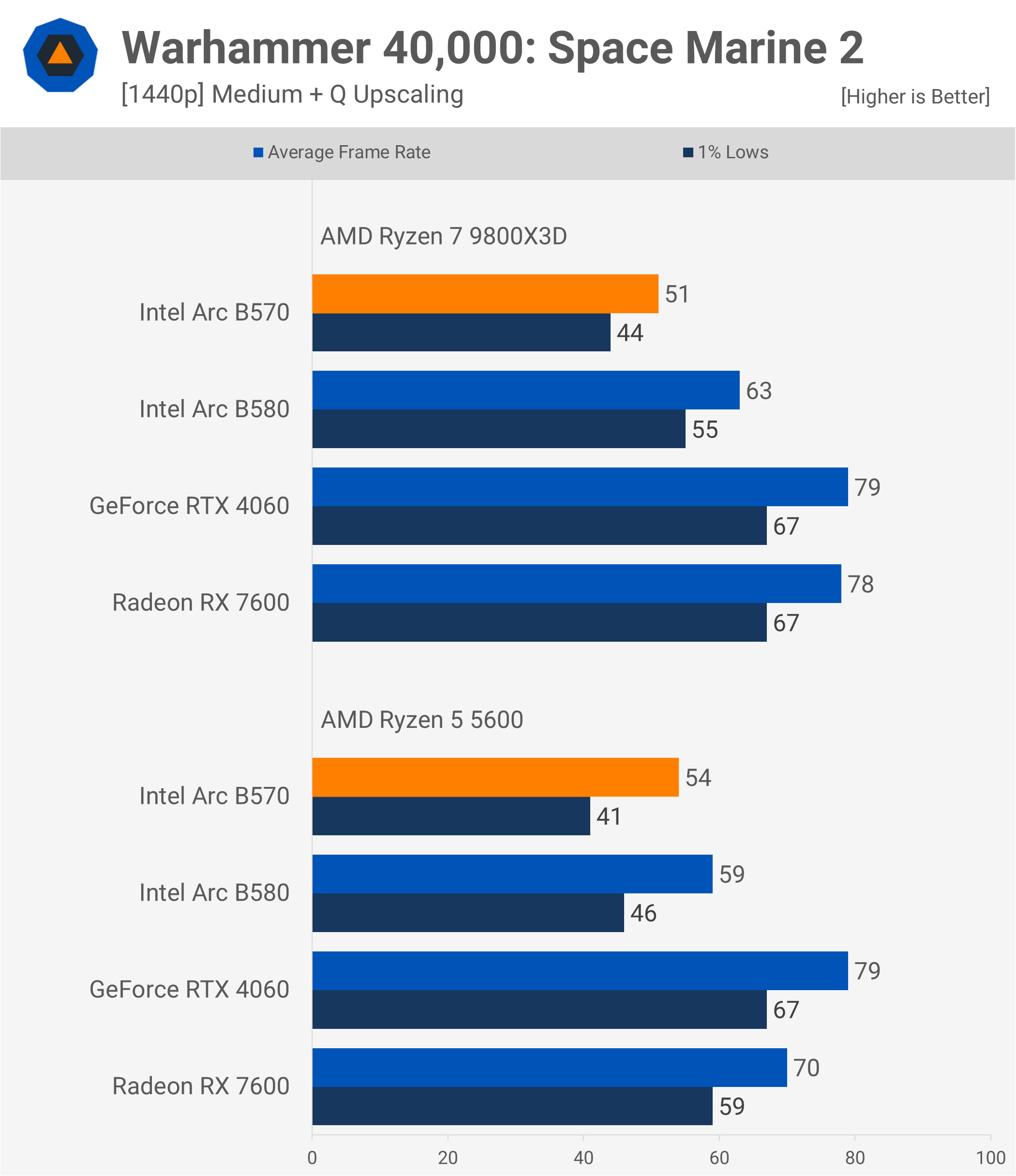
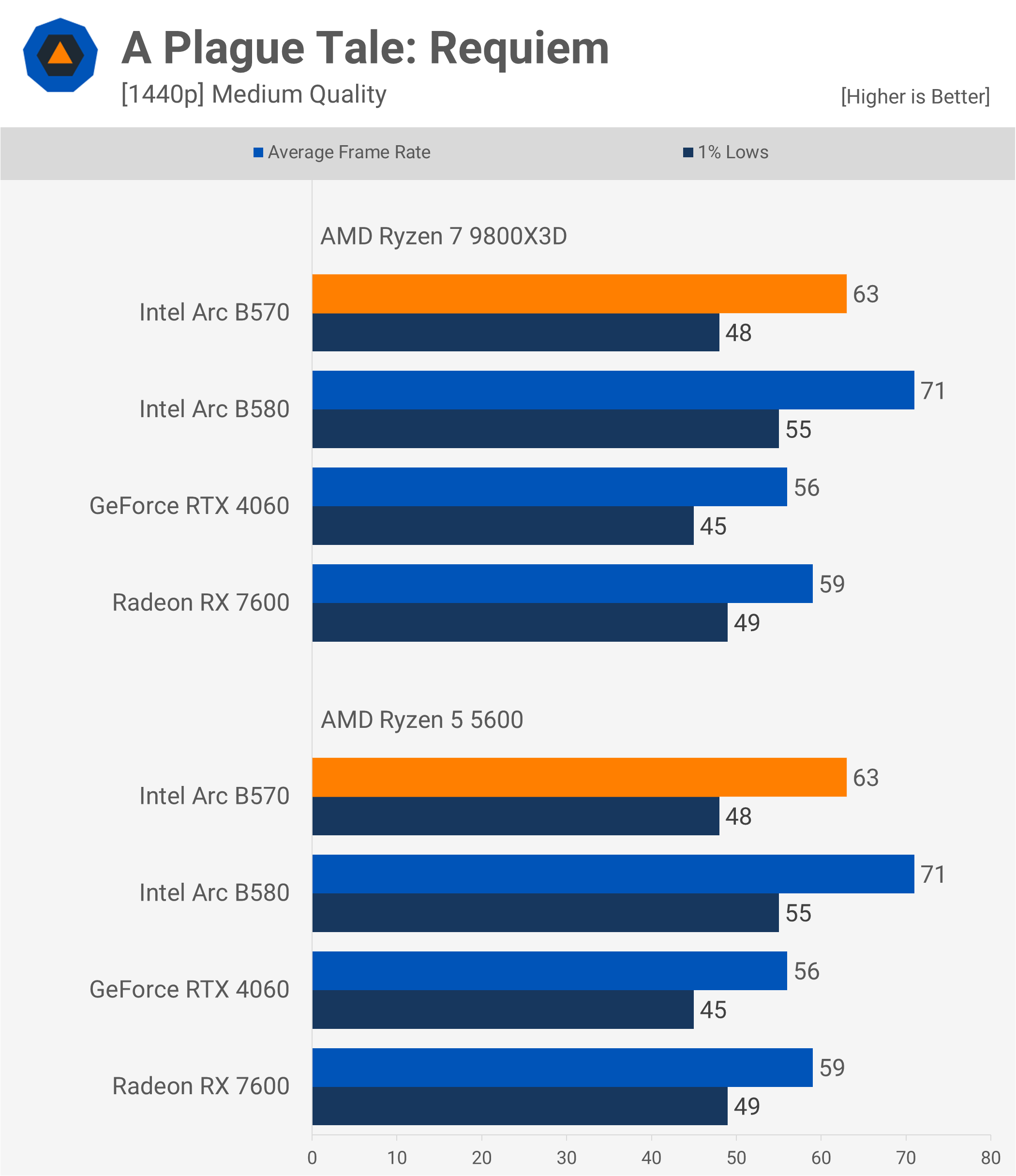
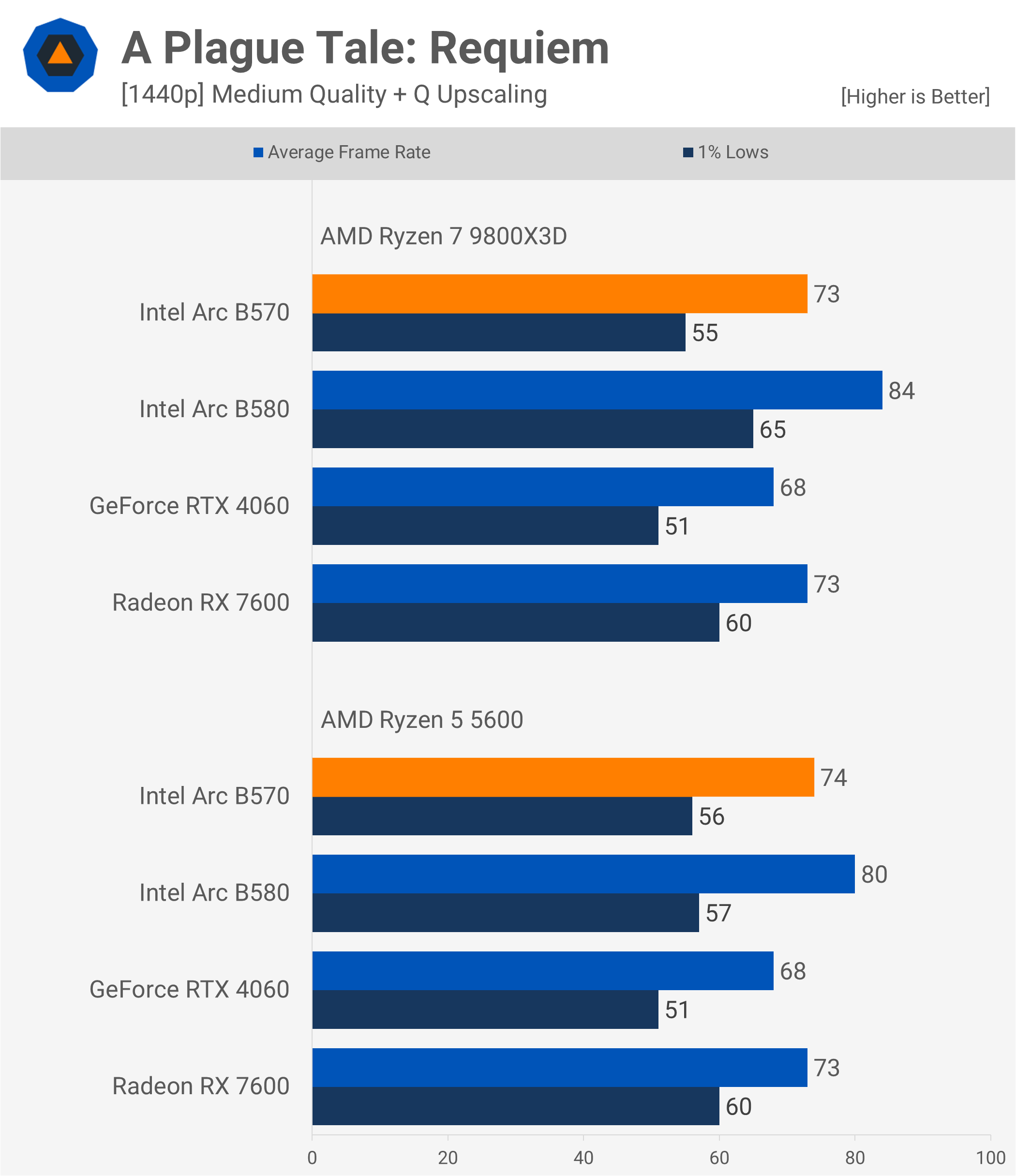
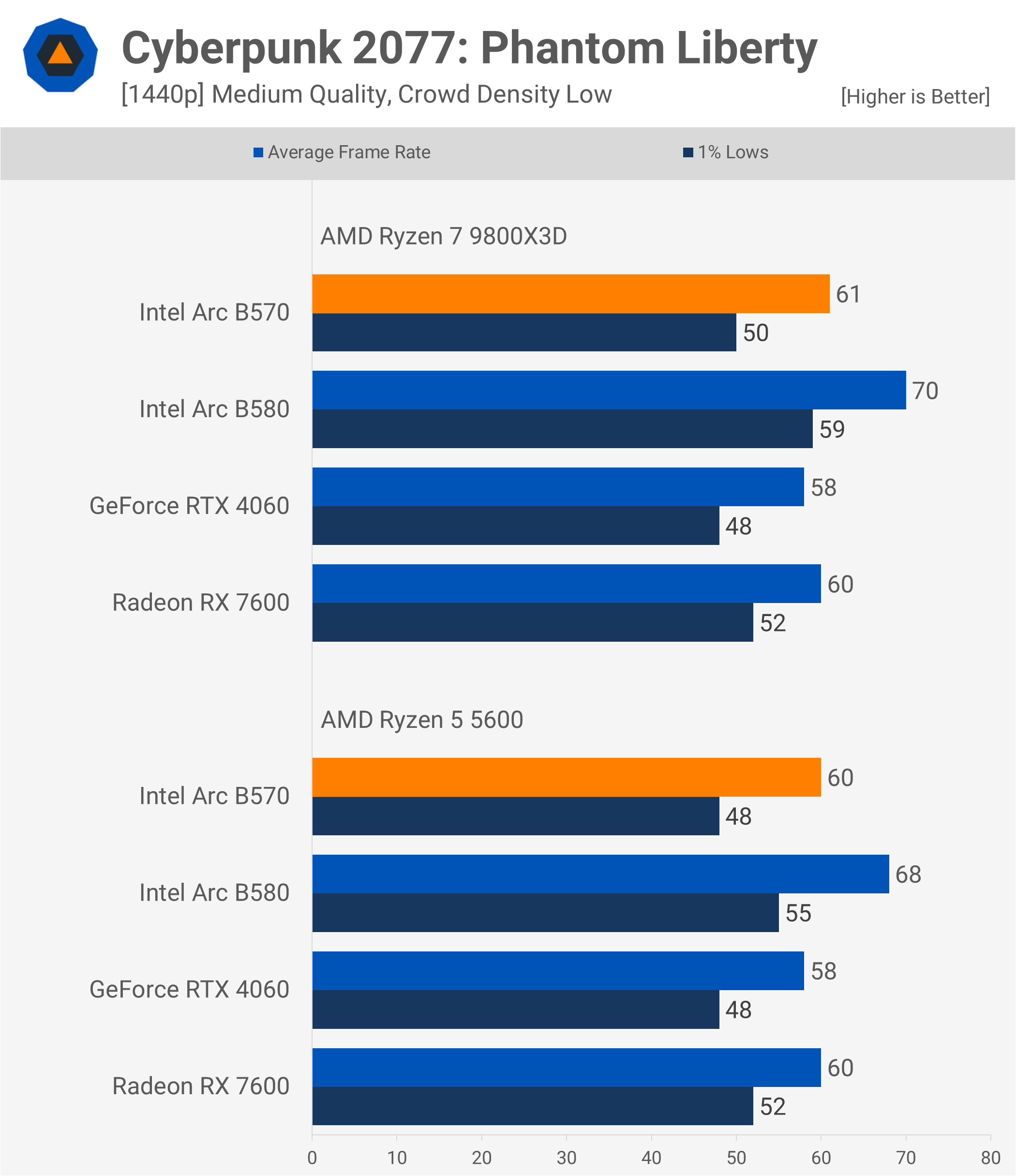
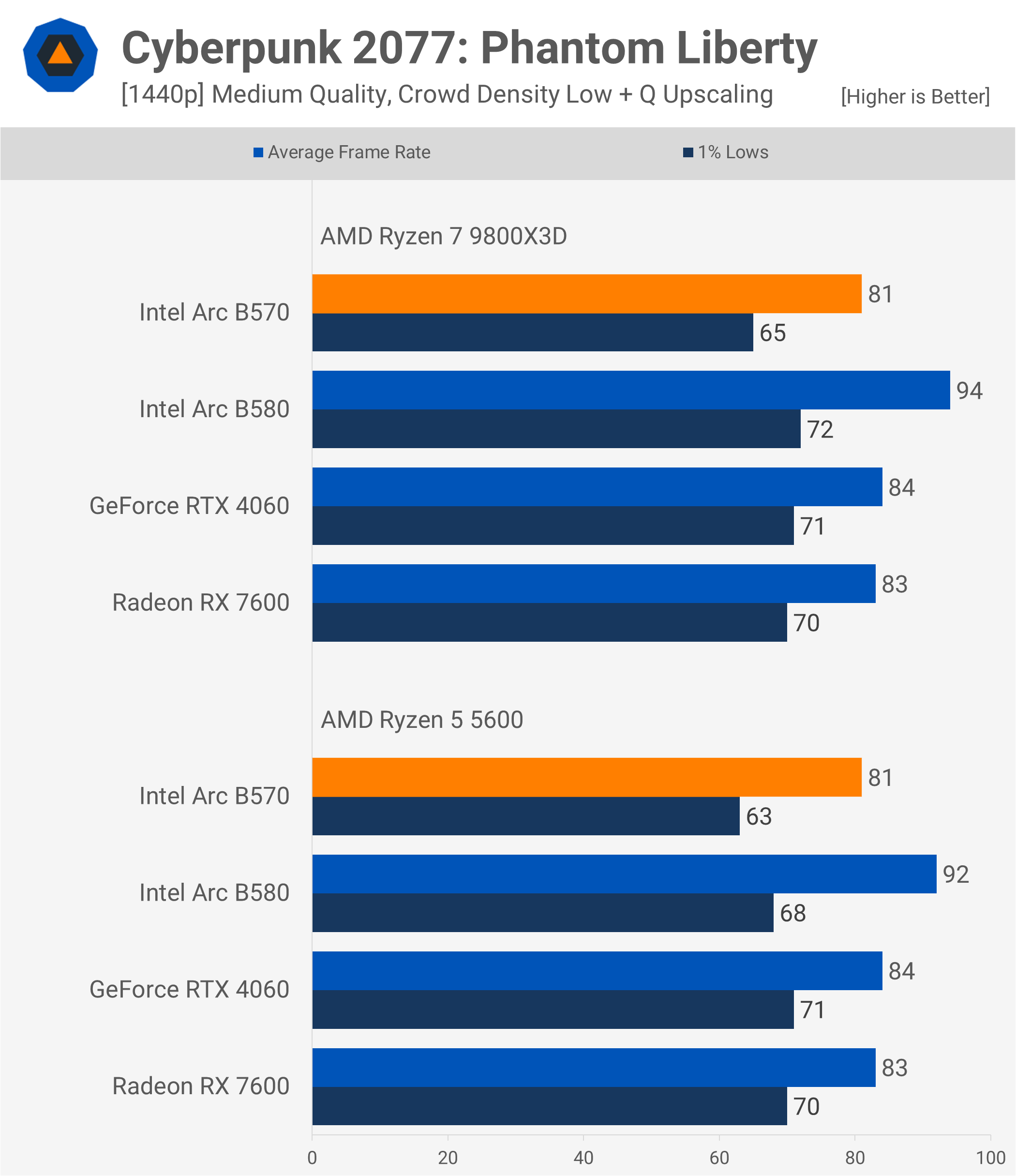
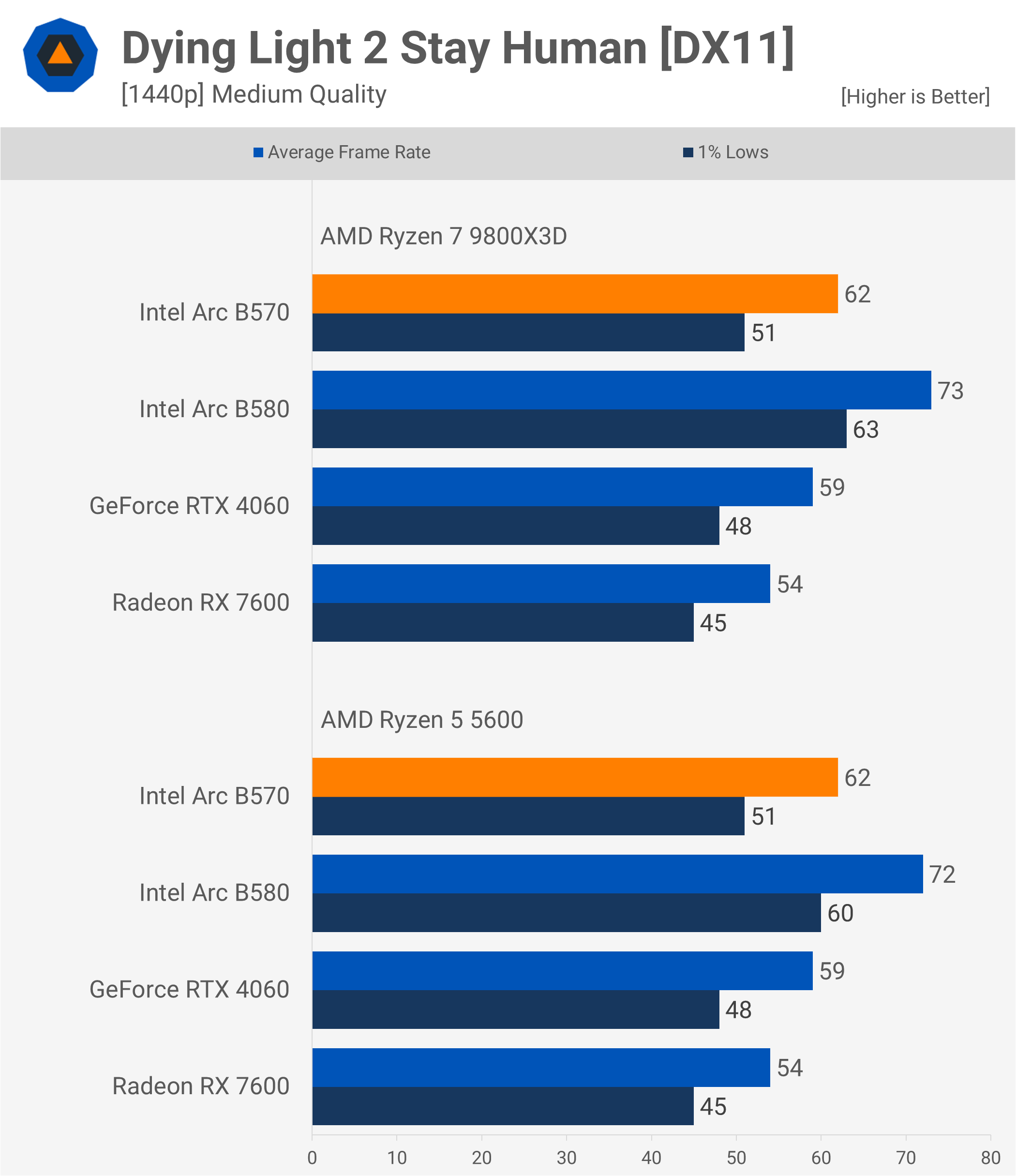
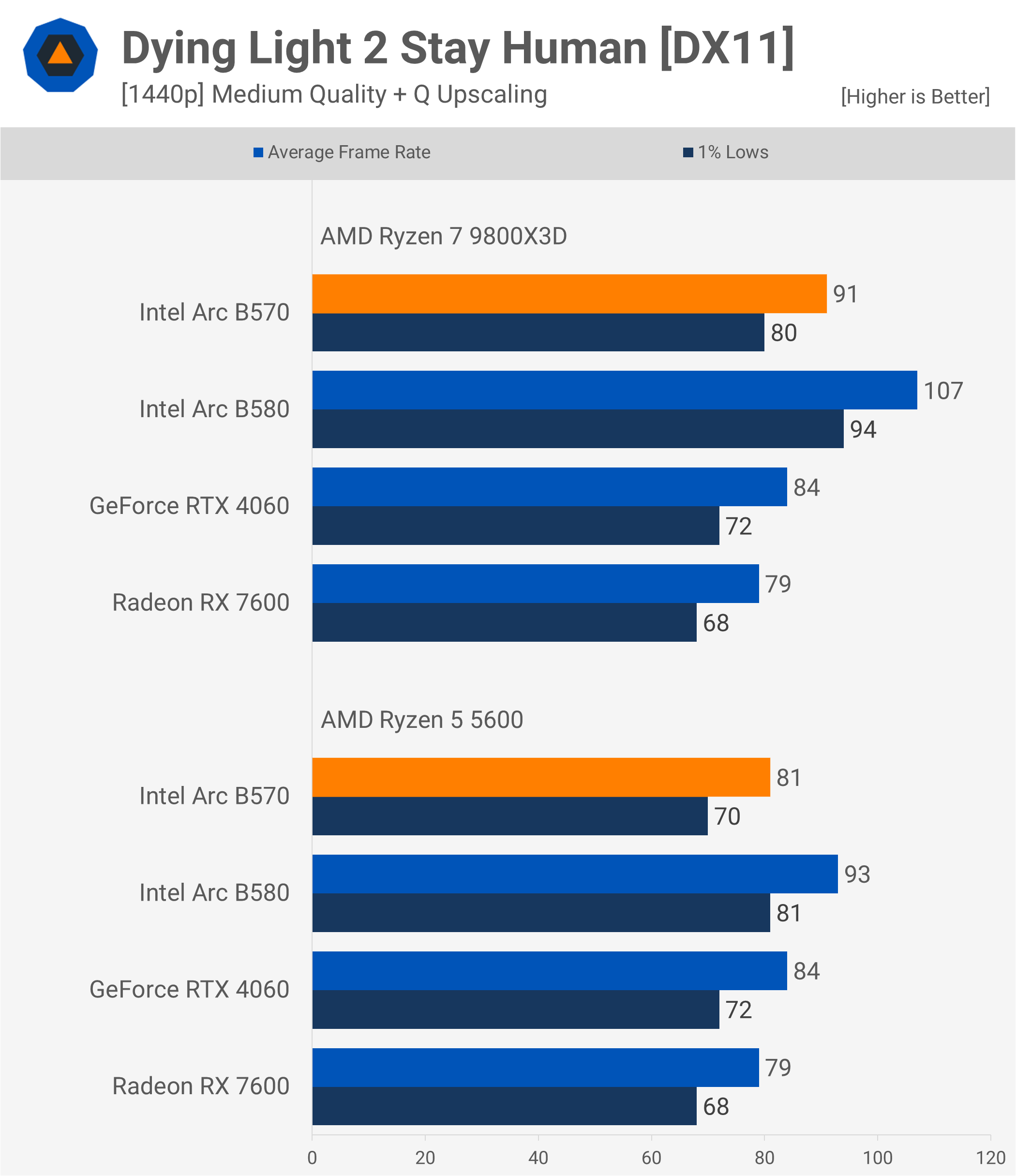
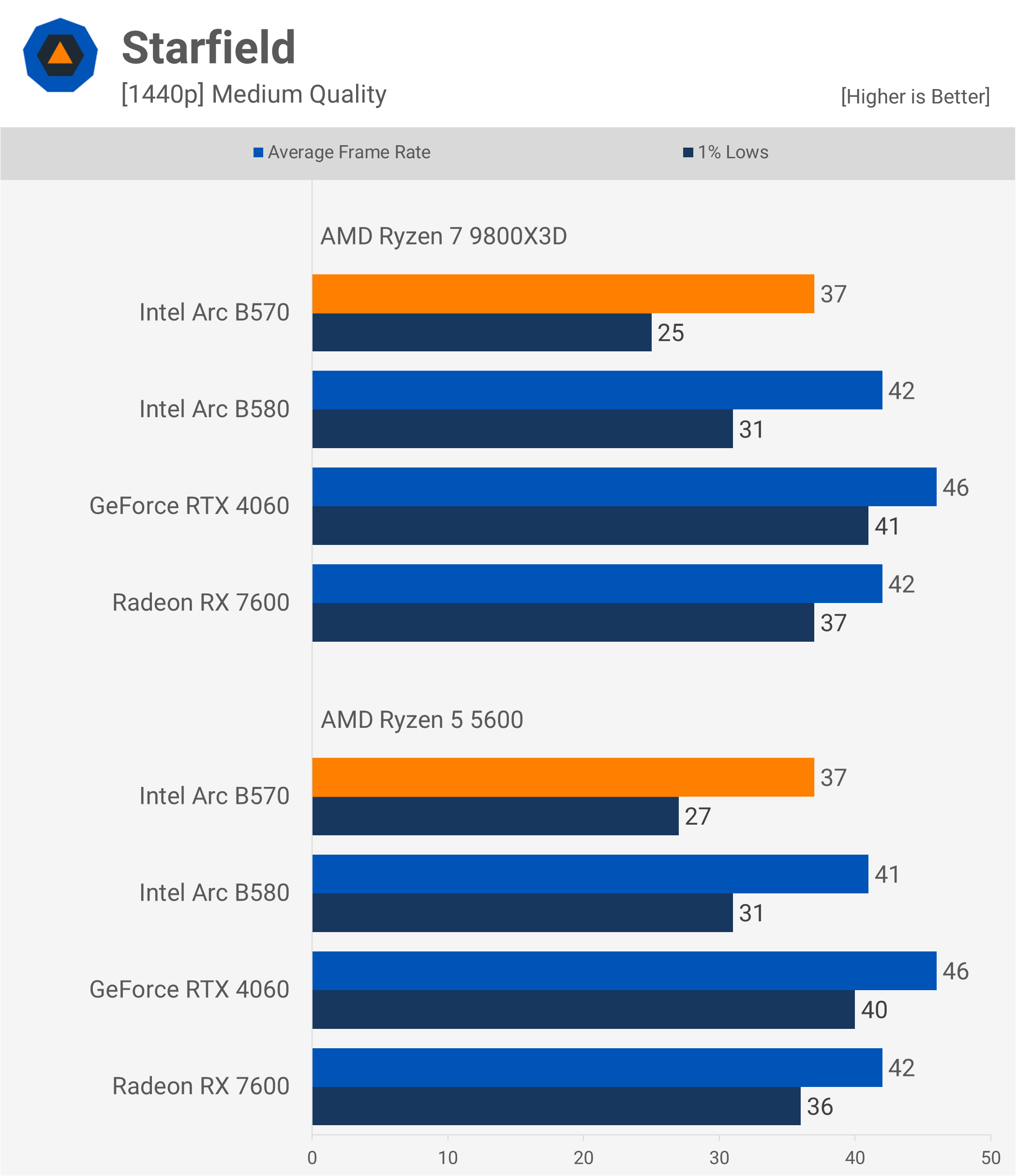
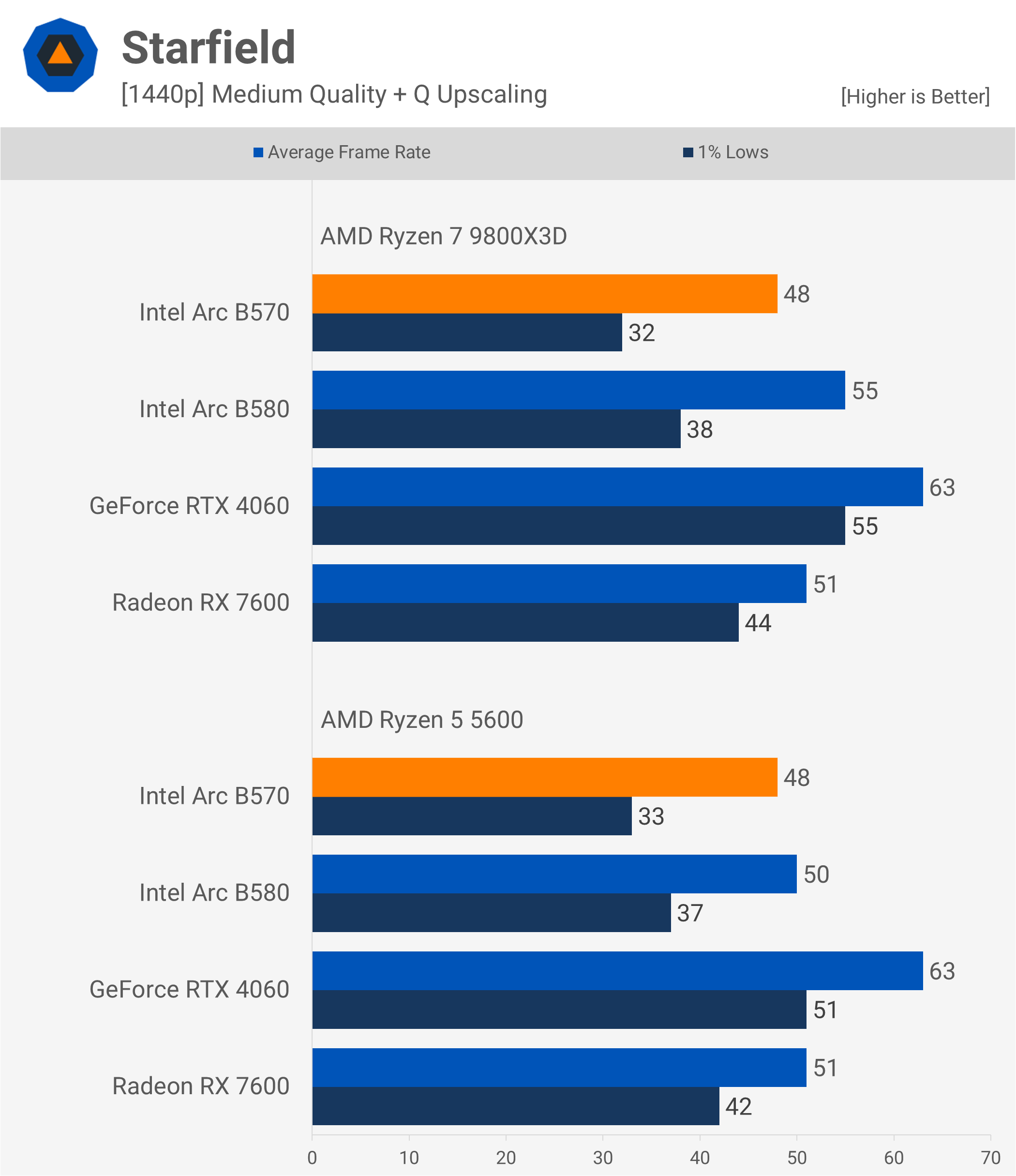
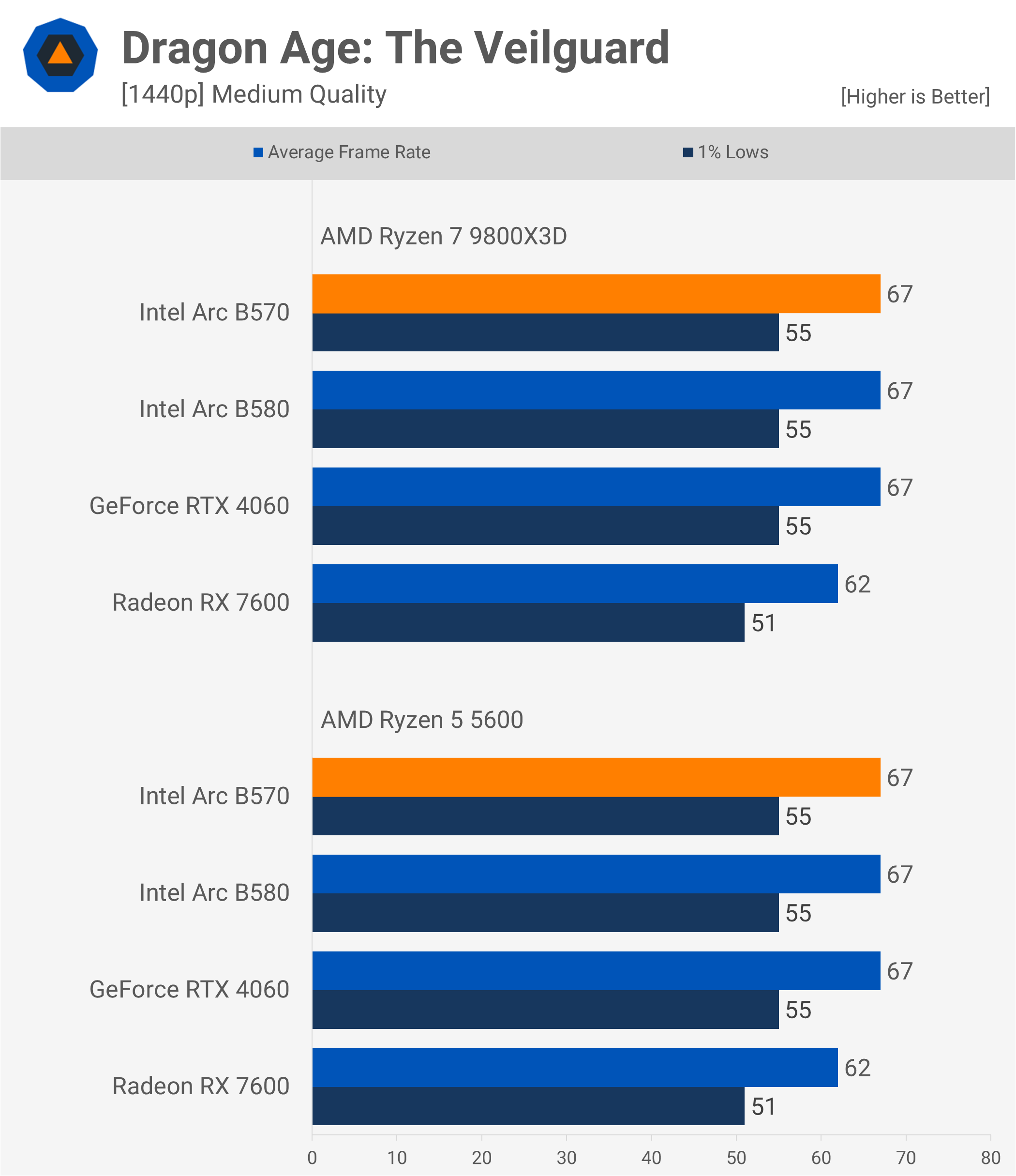
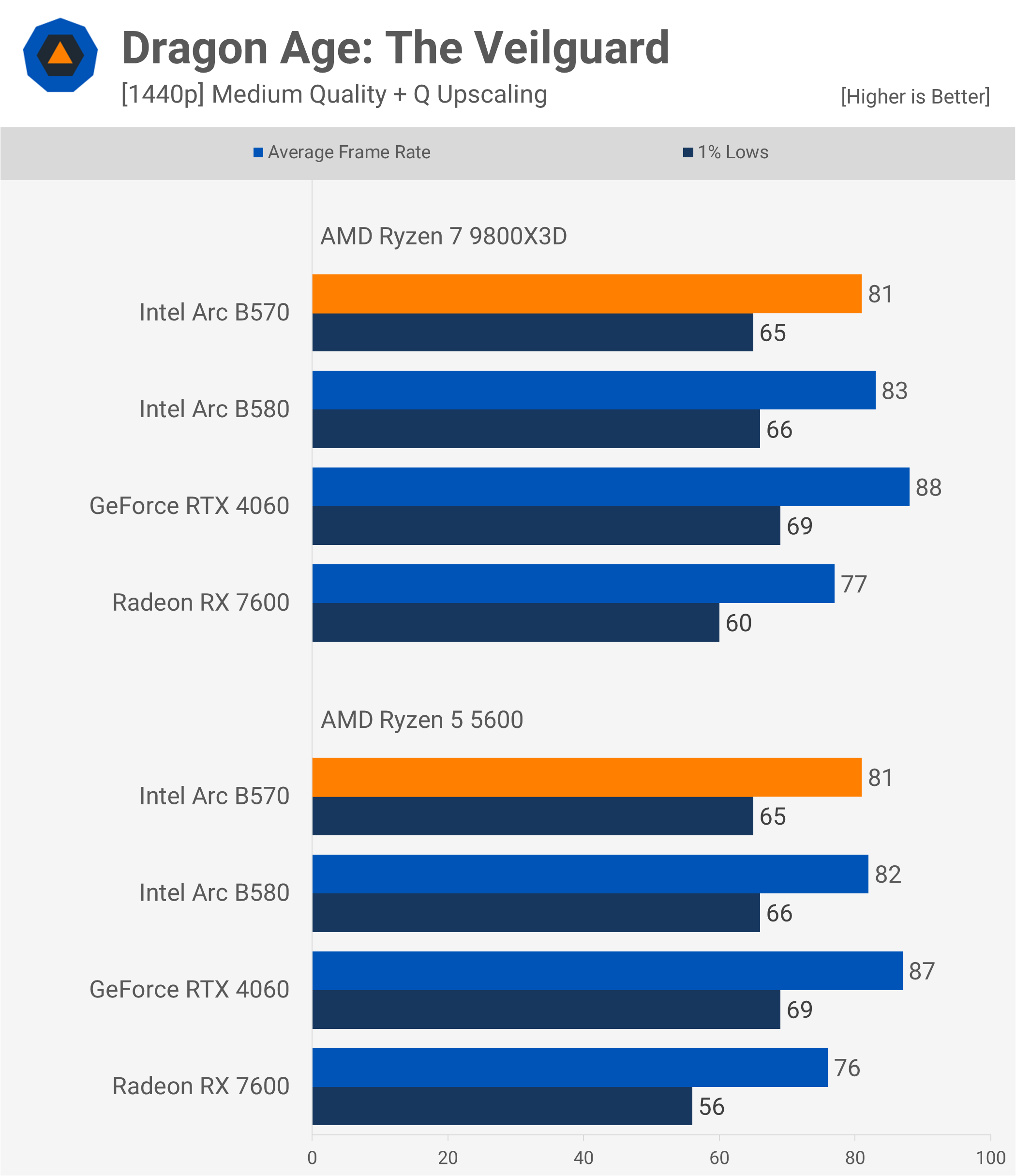
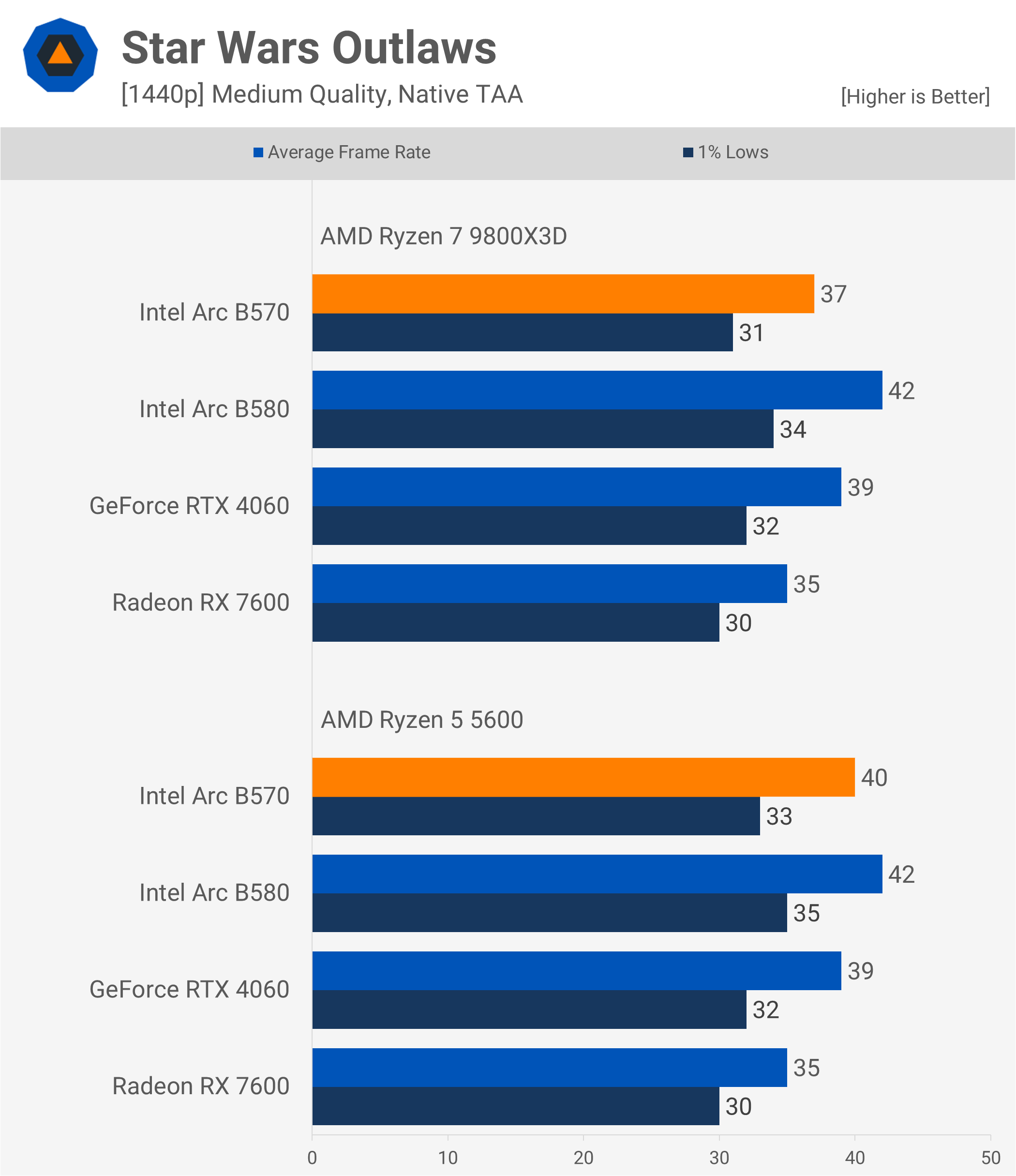
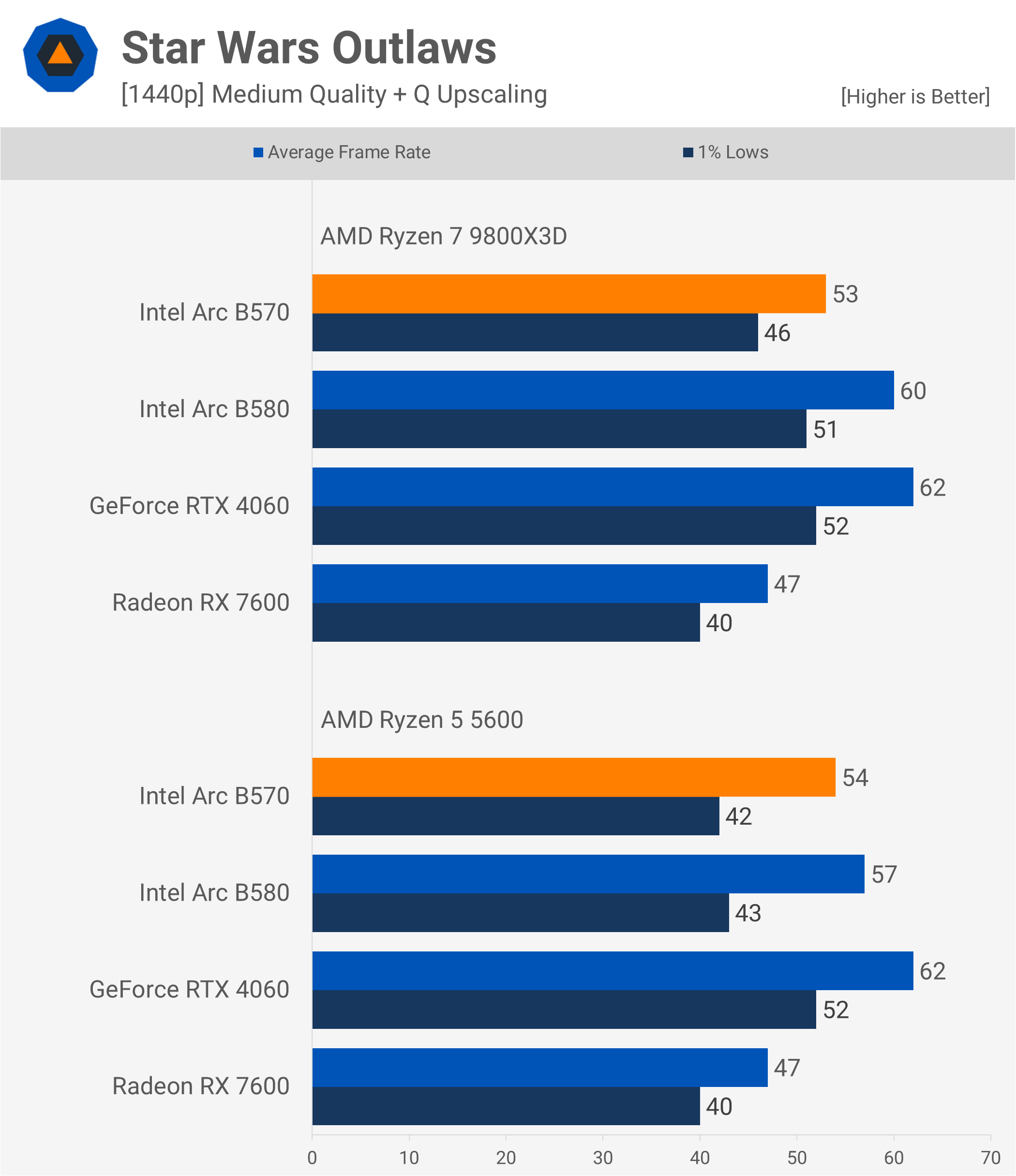

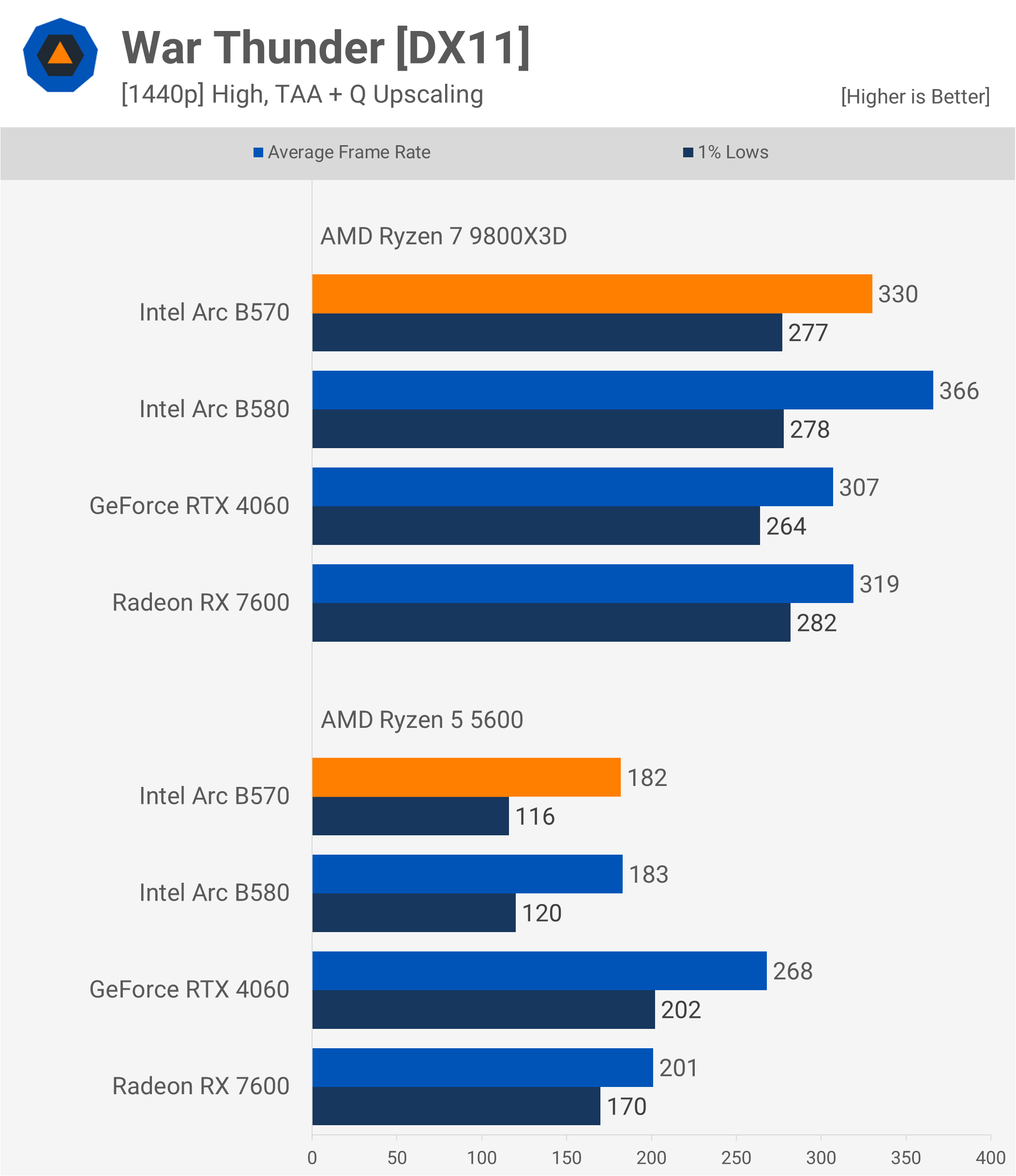
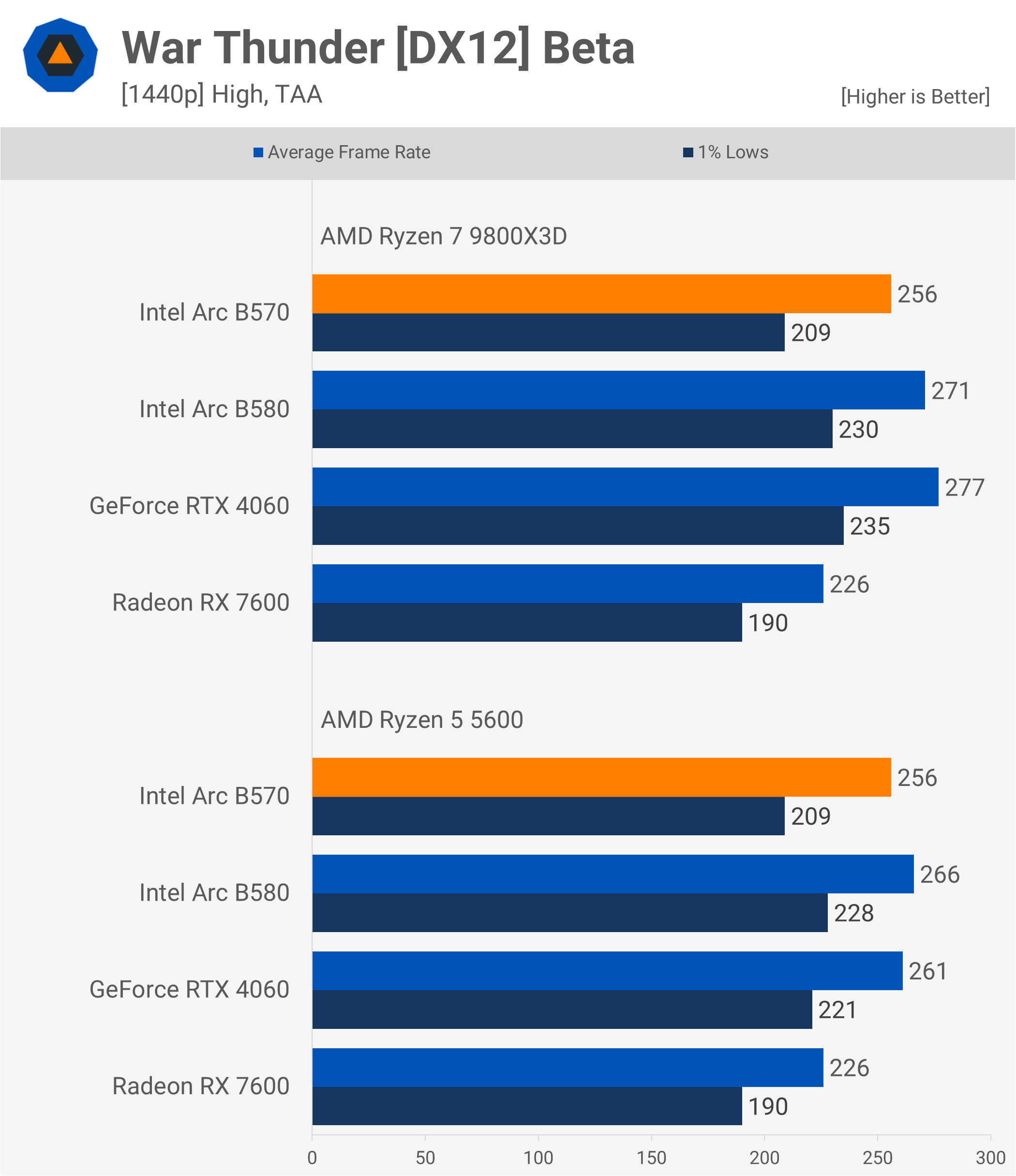
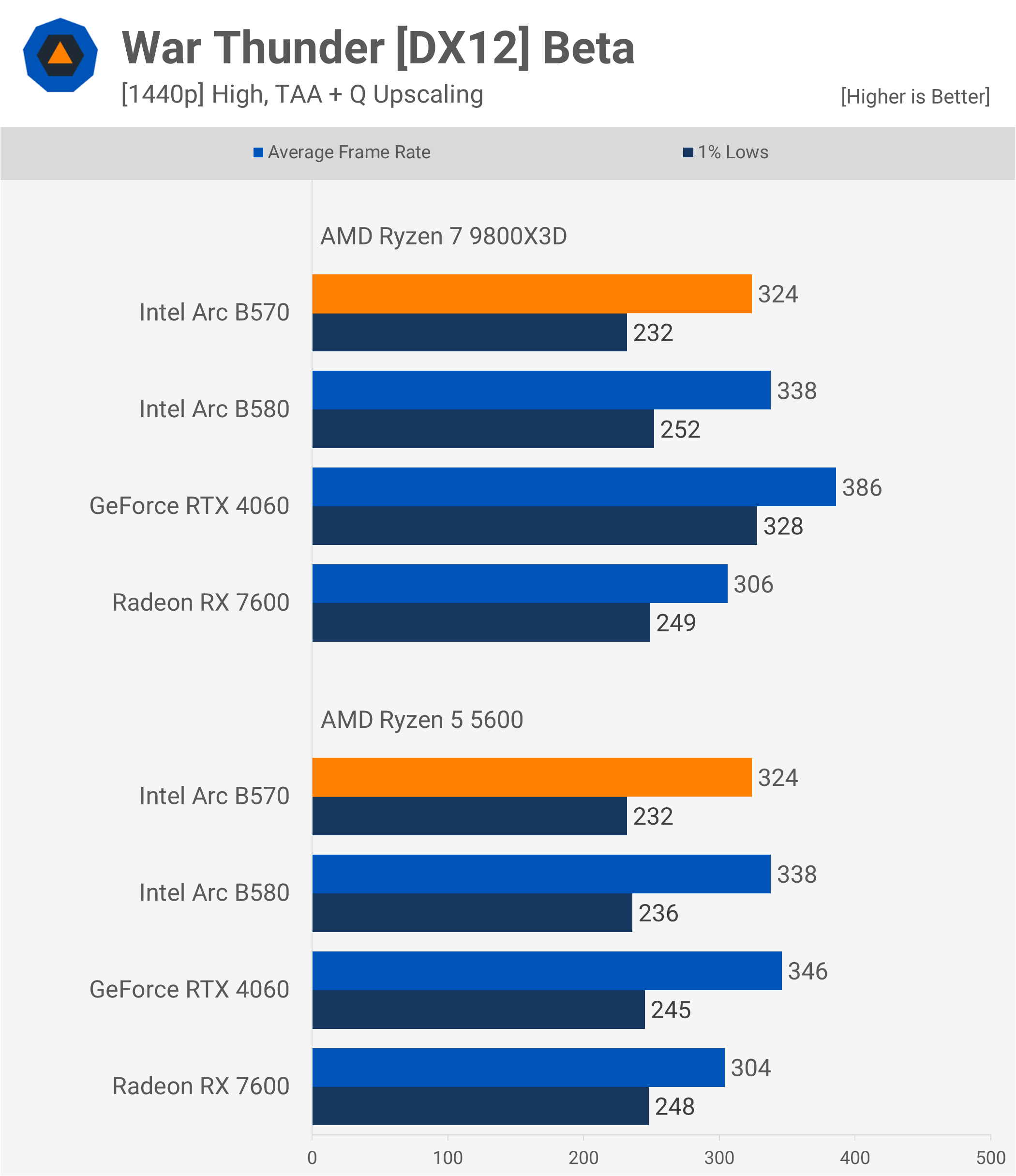
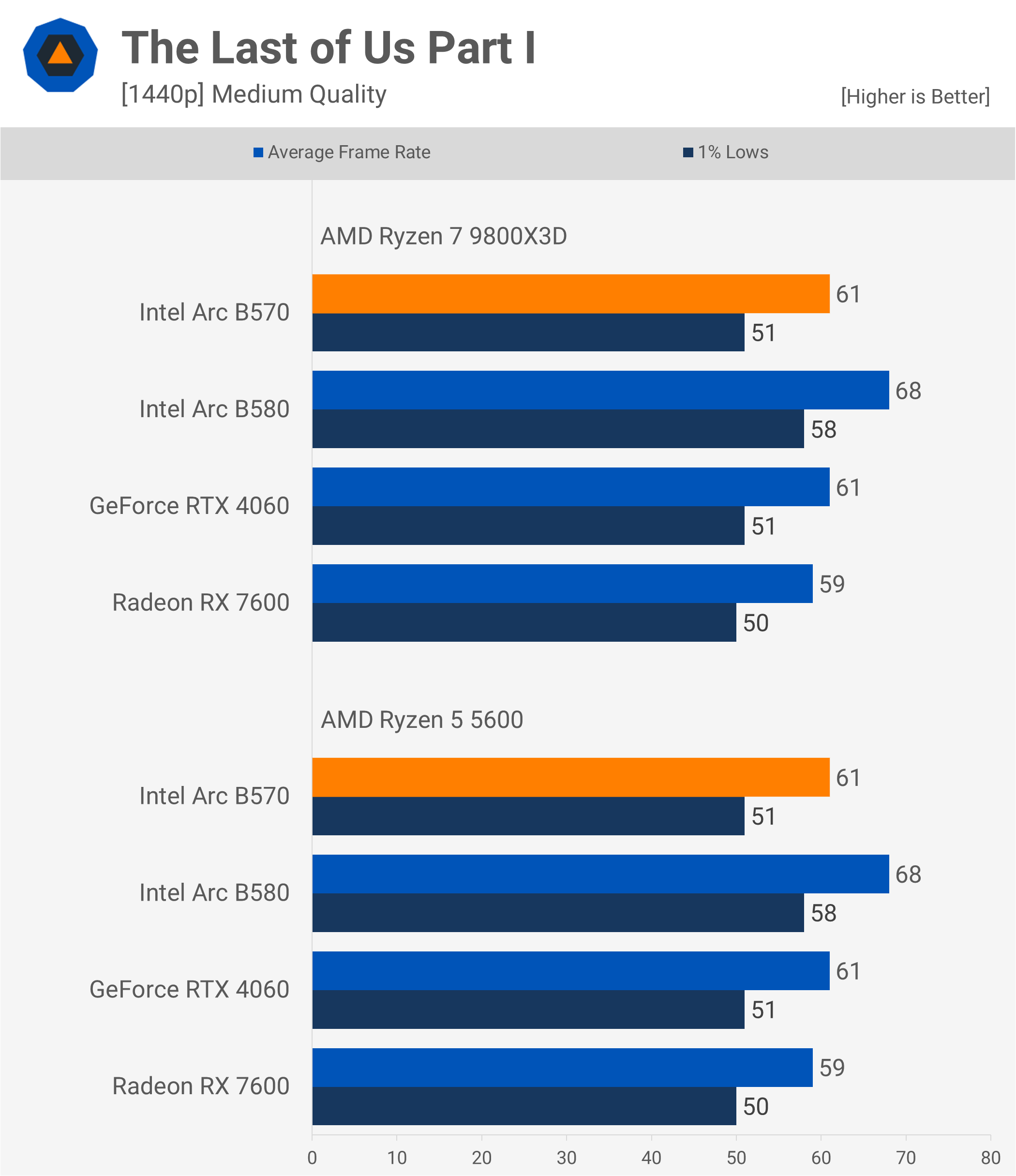
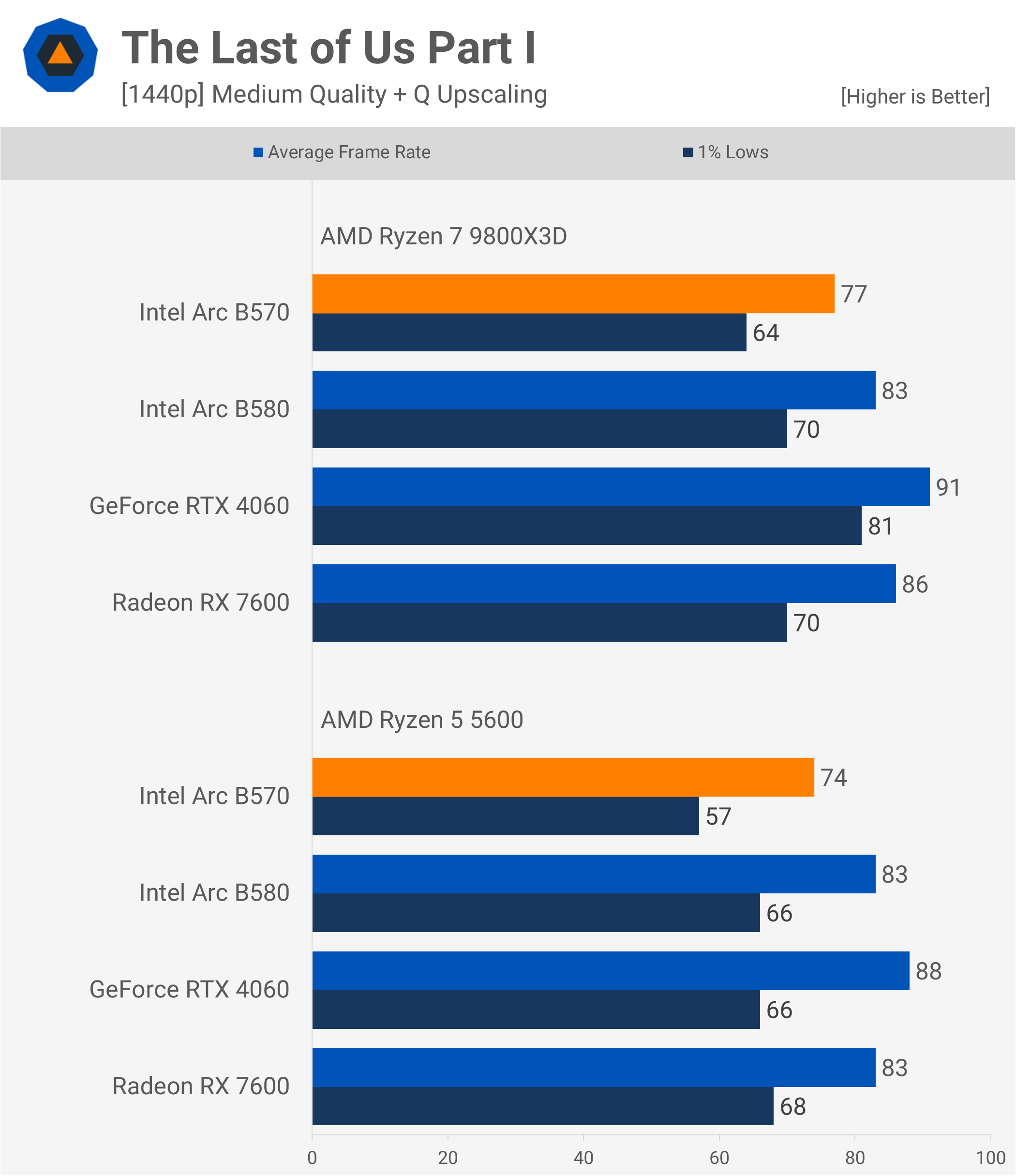
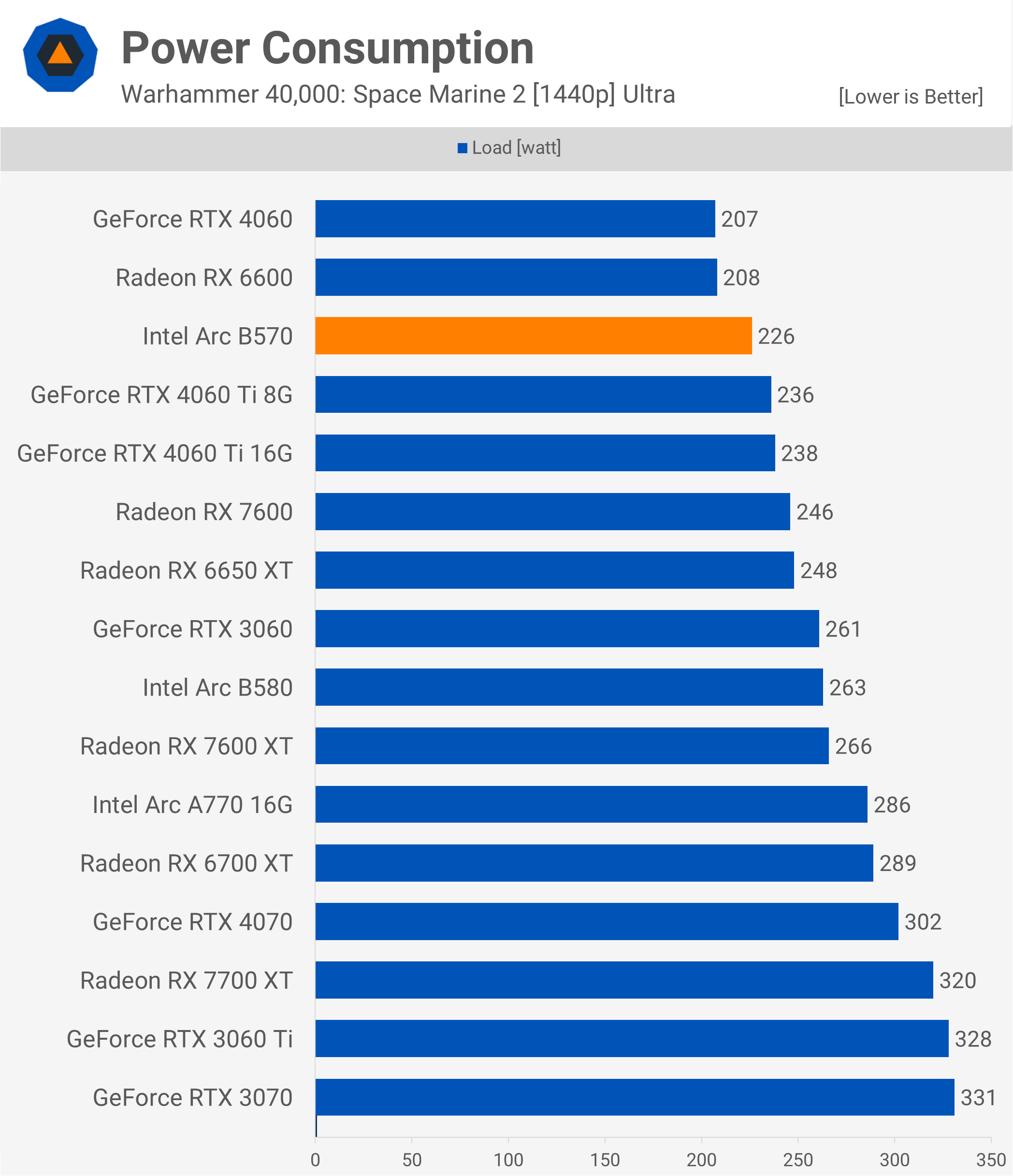
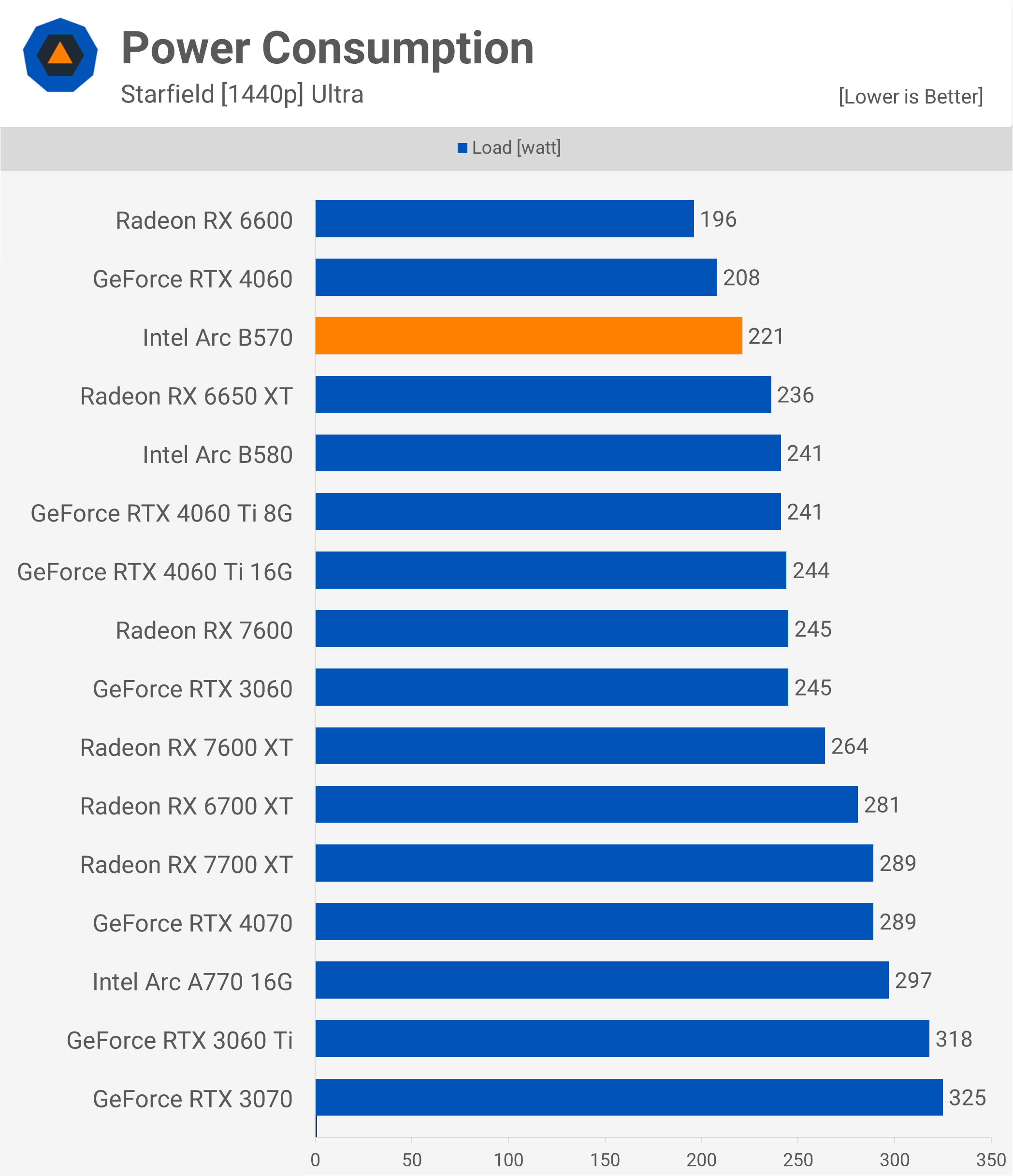

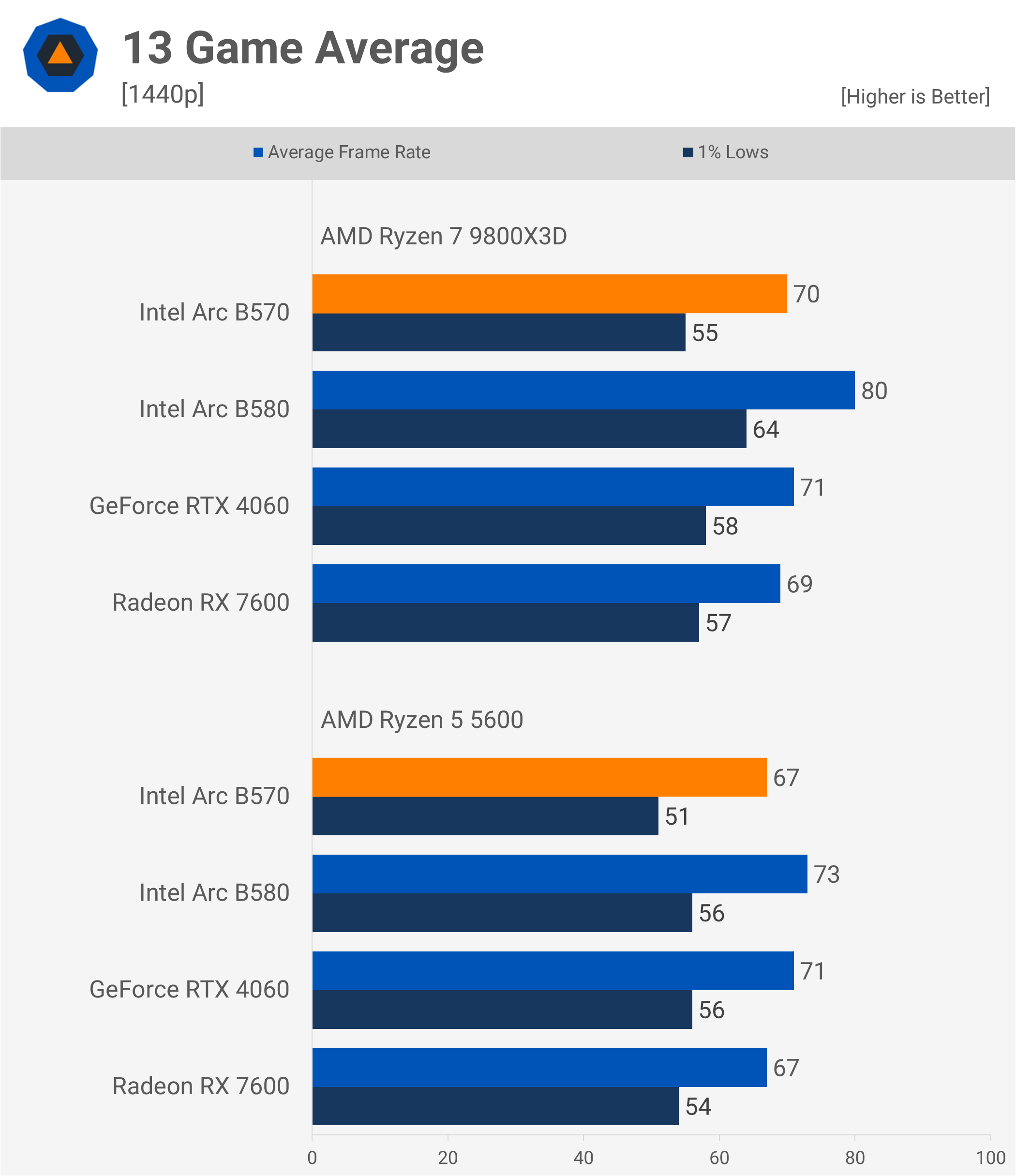
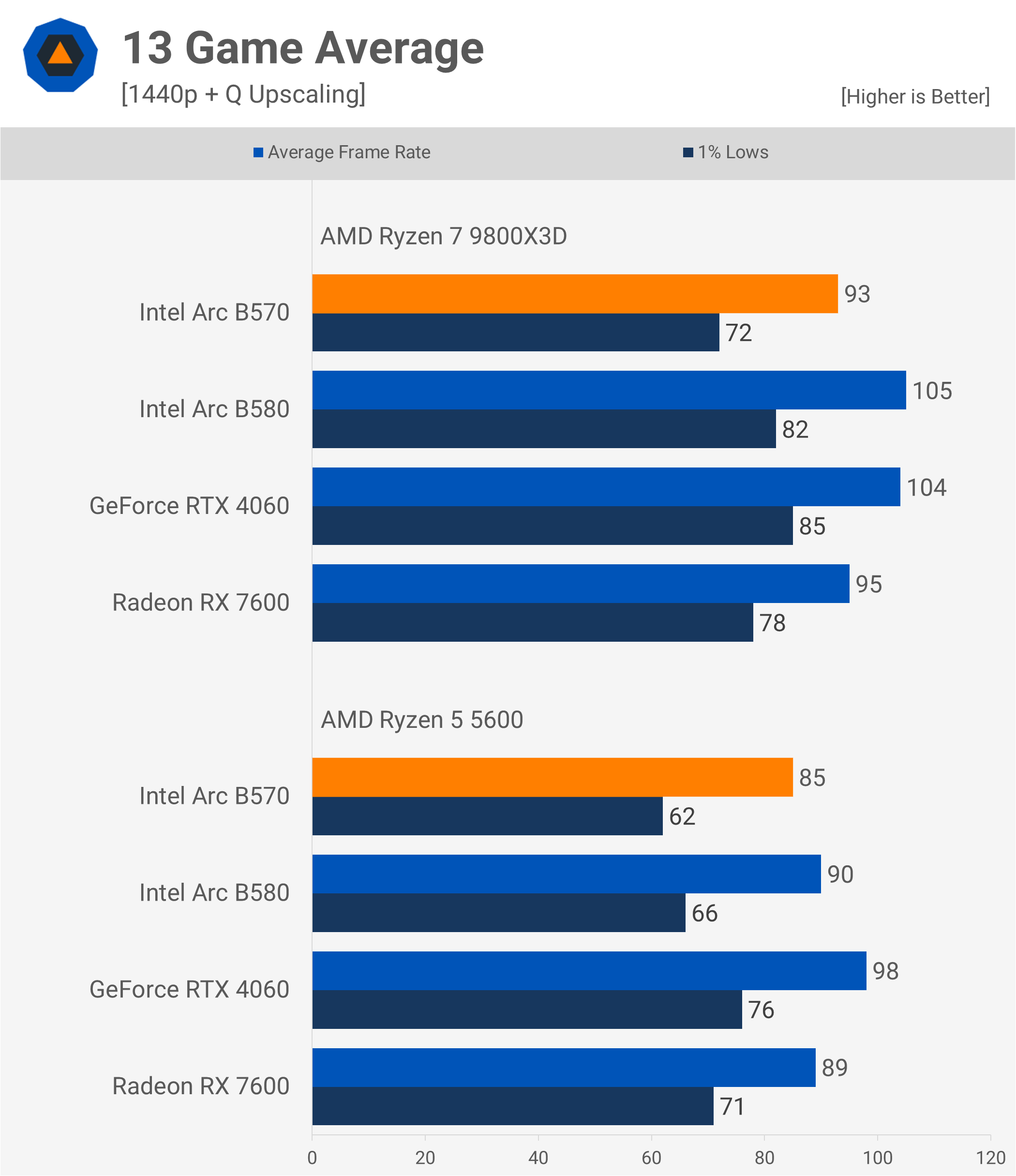
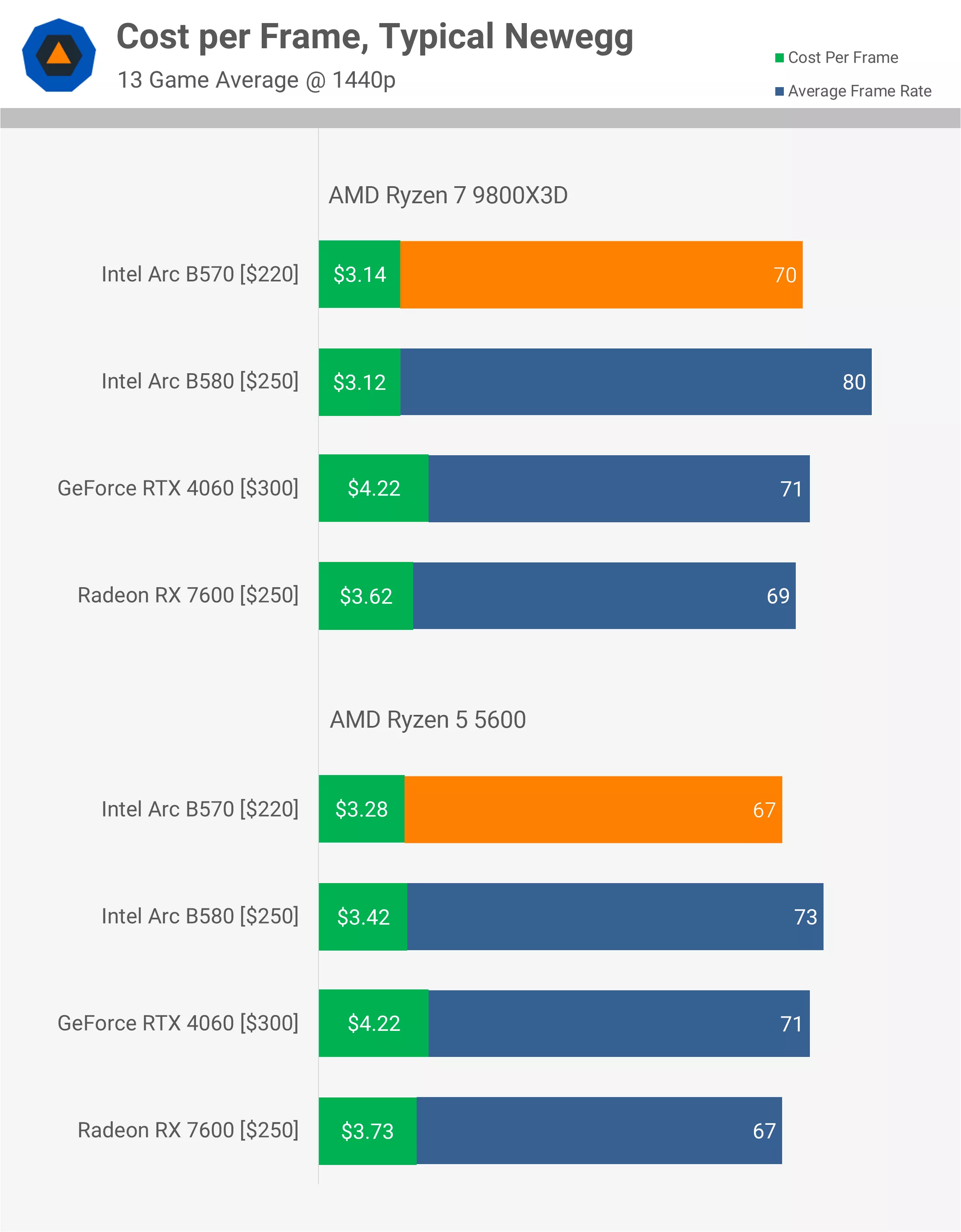
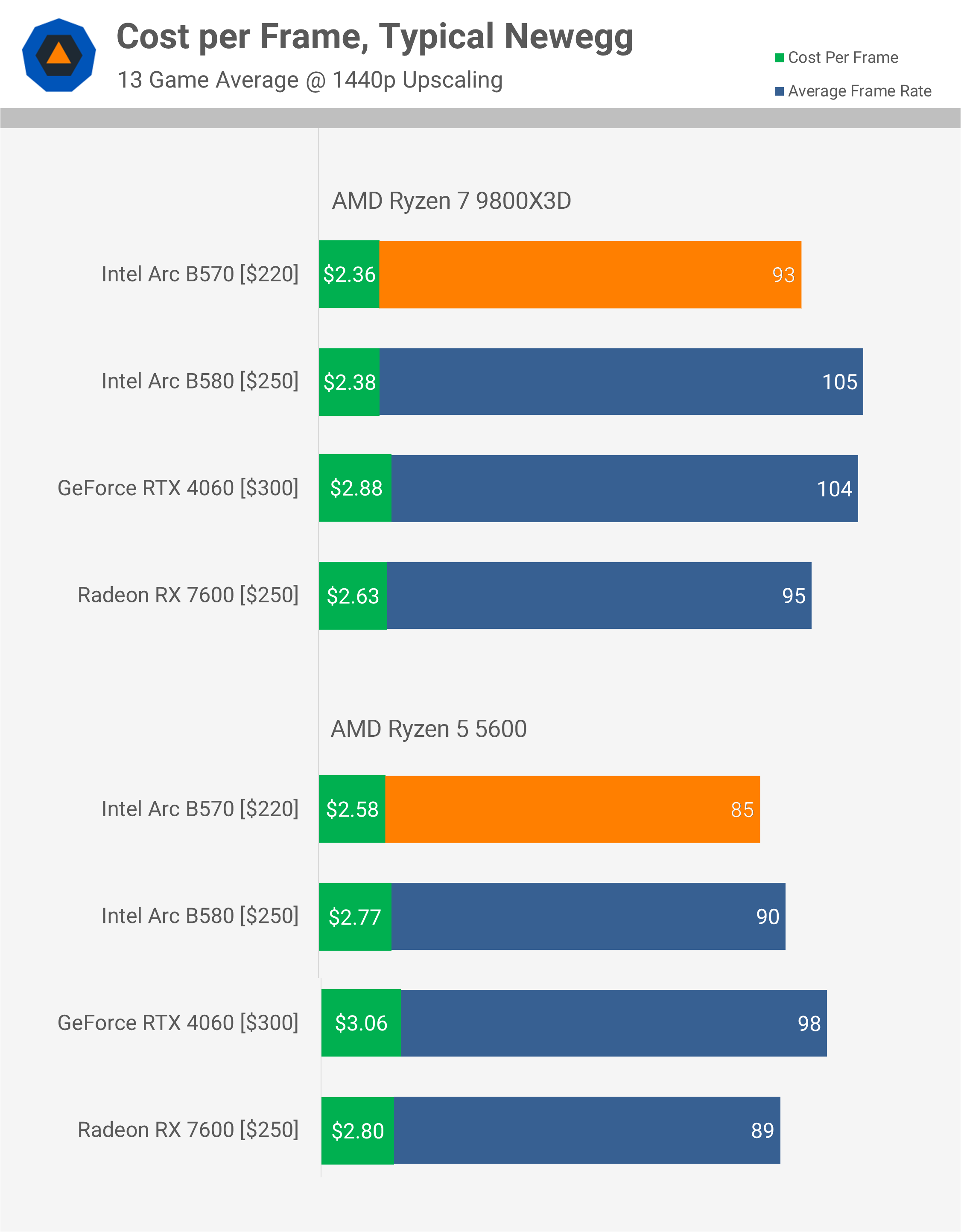
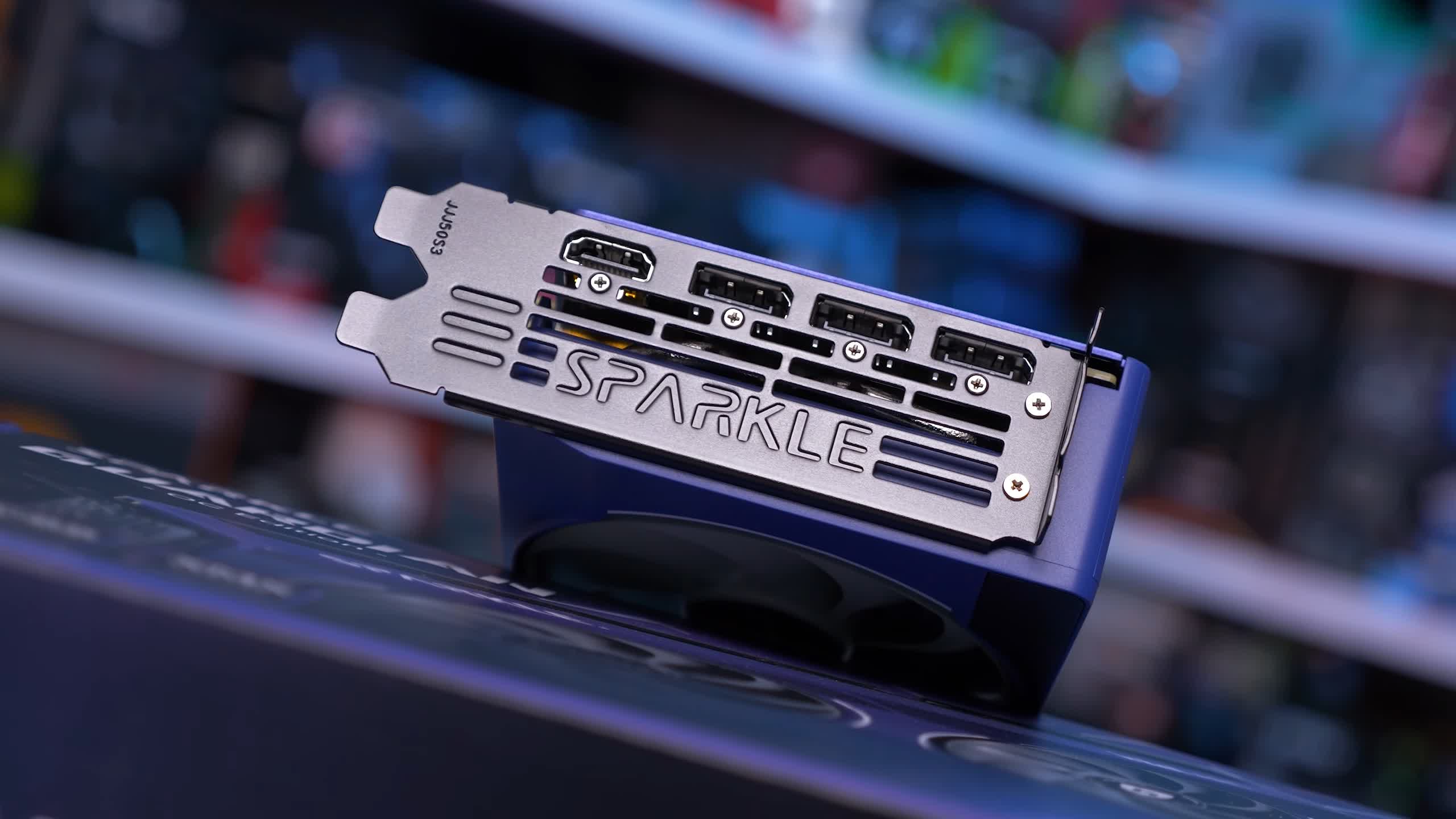
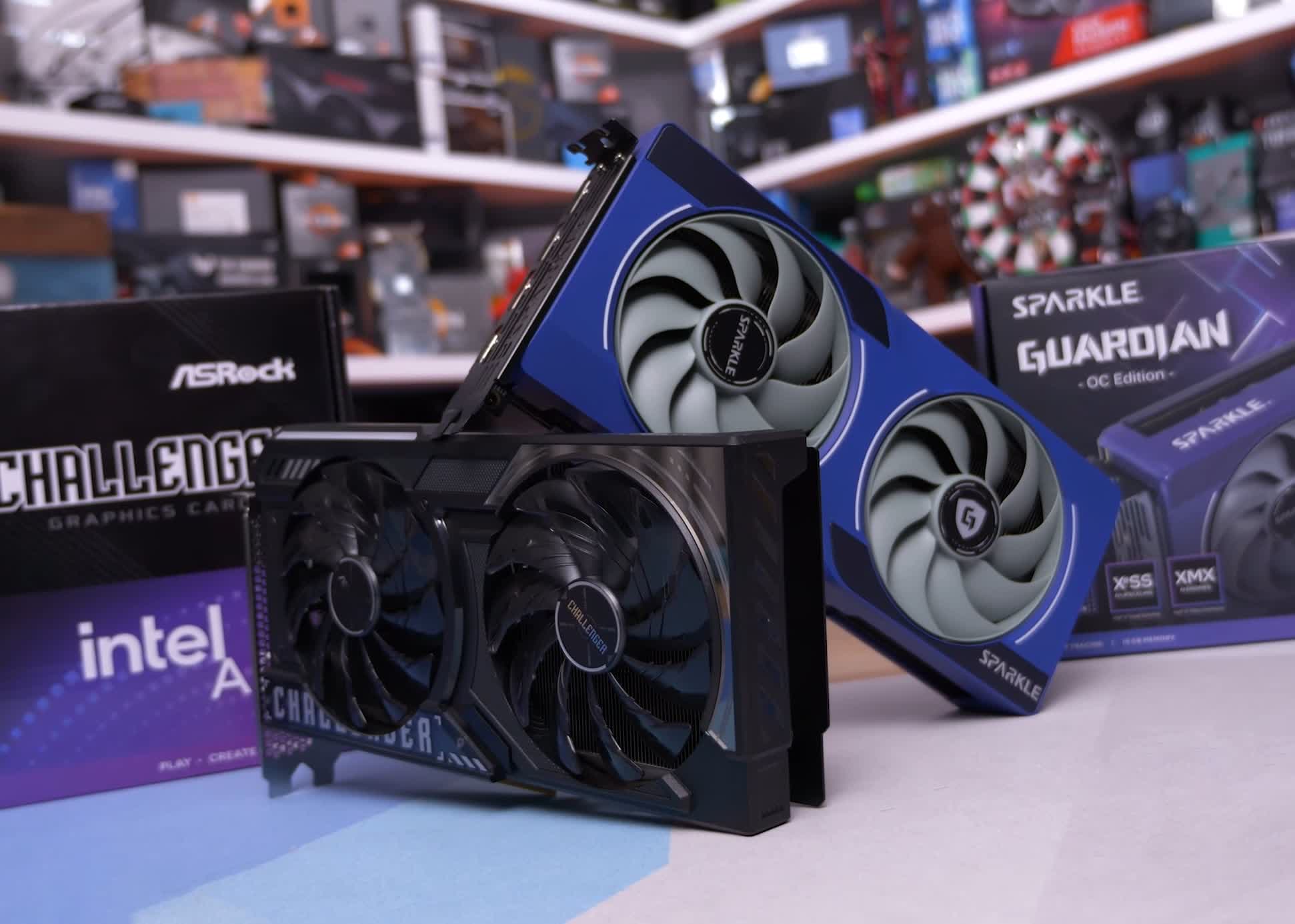
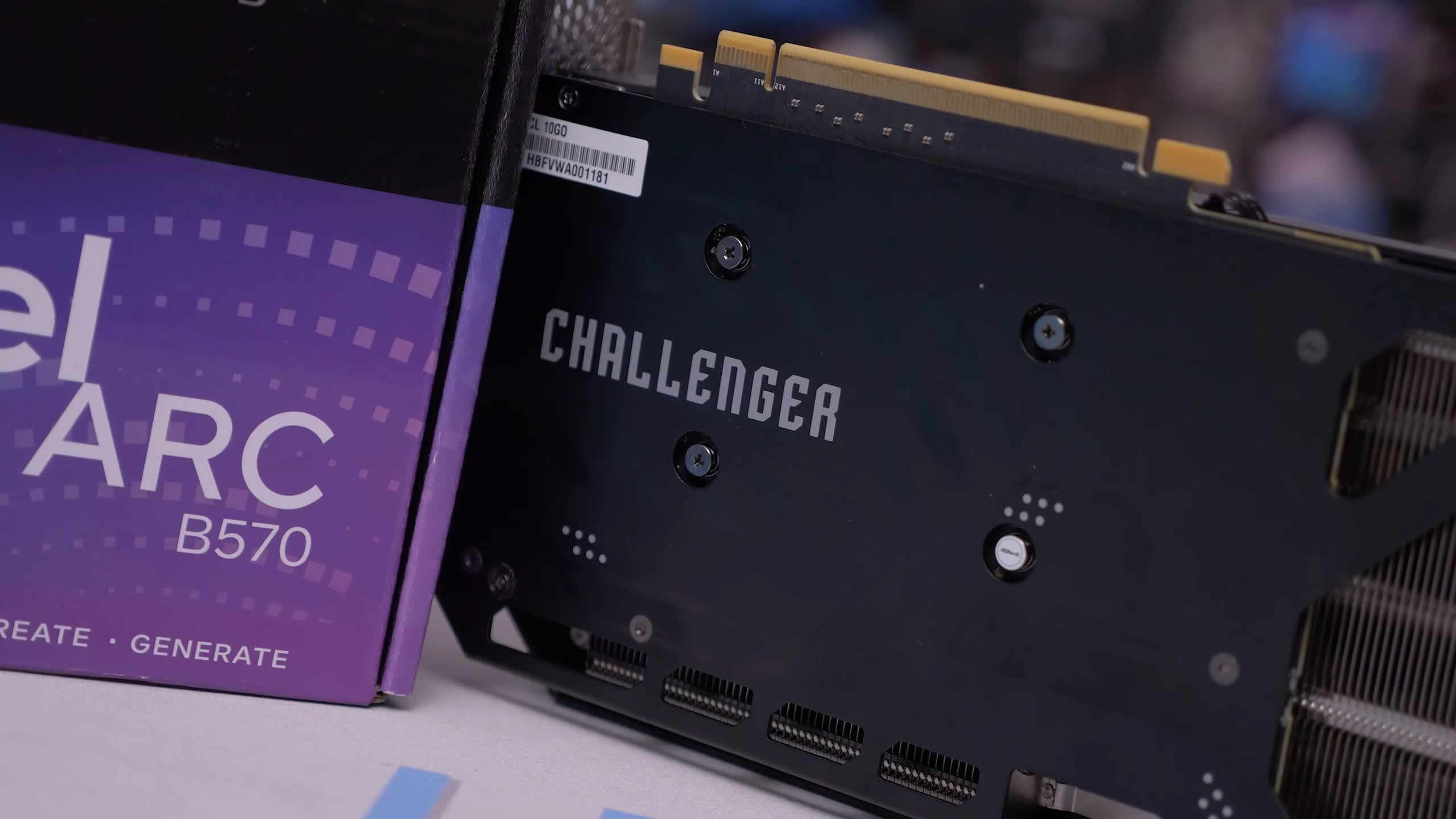
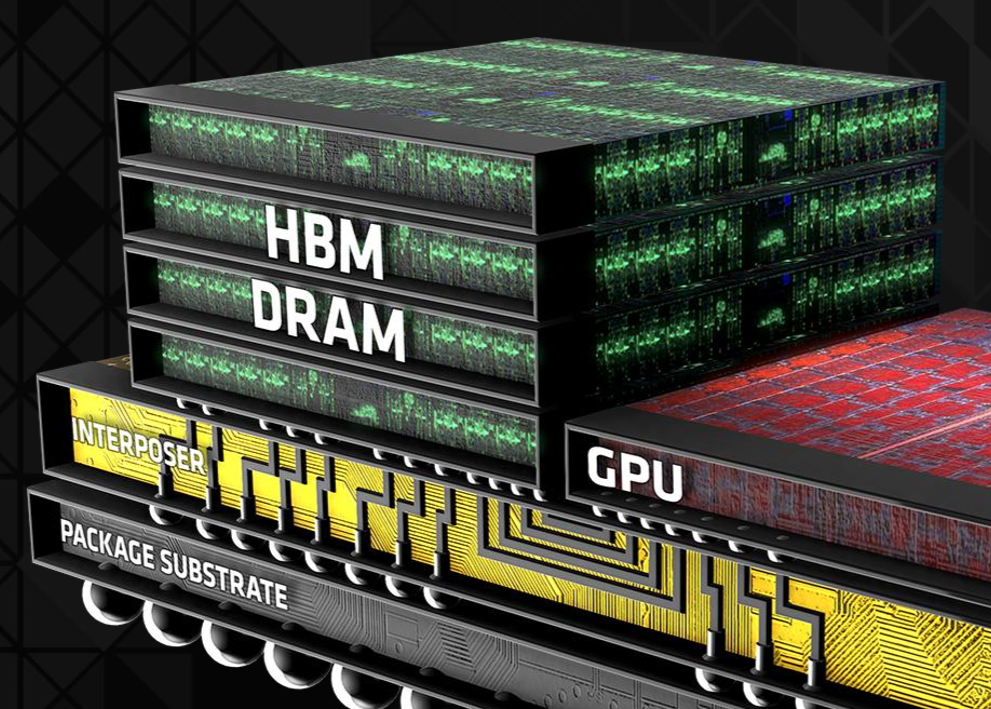
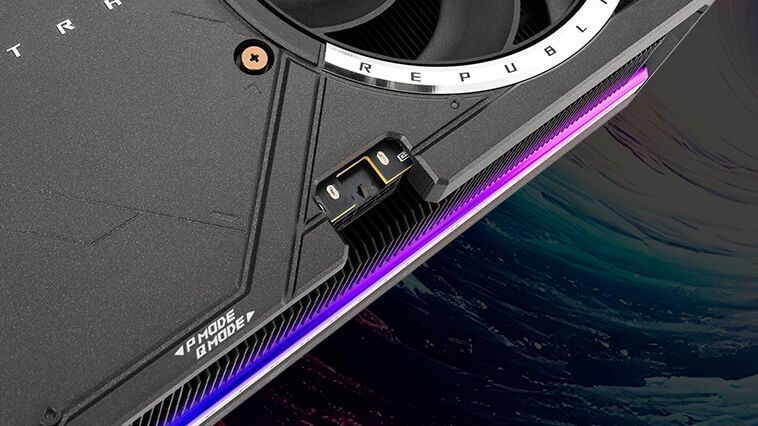
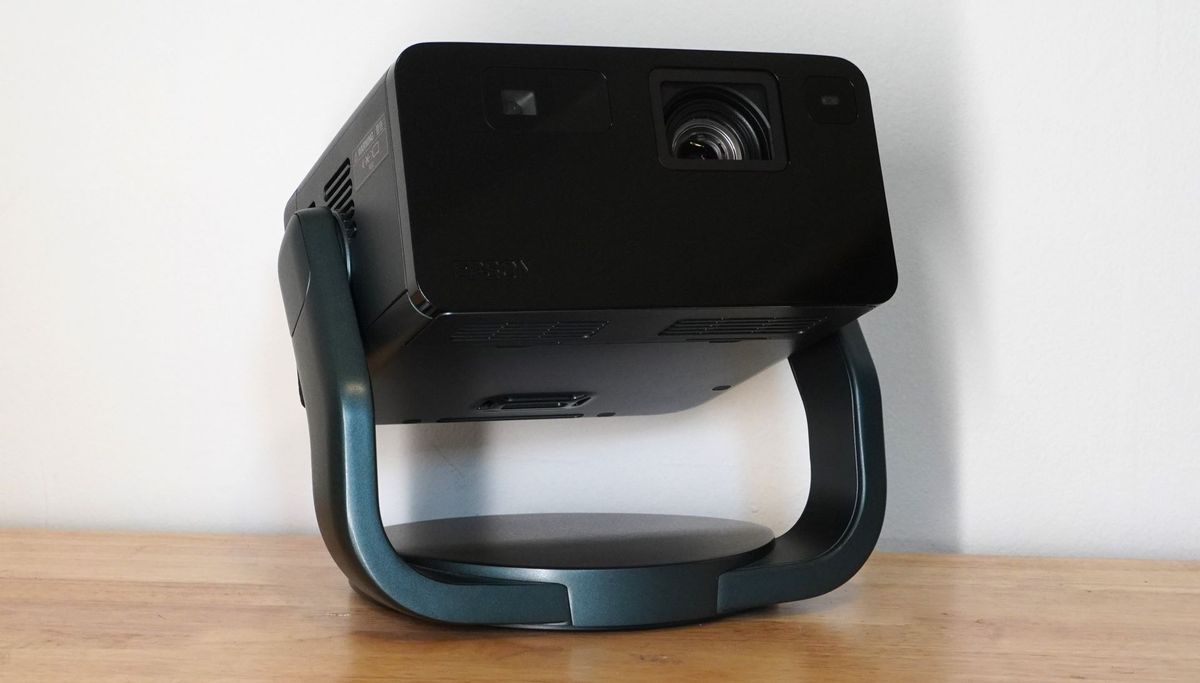





 English (US) ·
English (US) ·